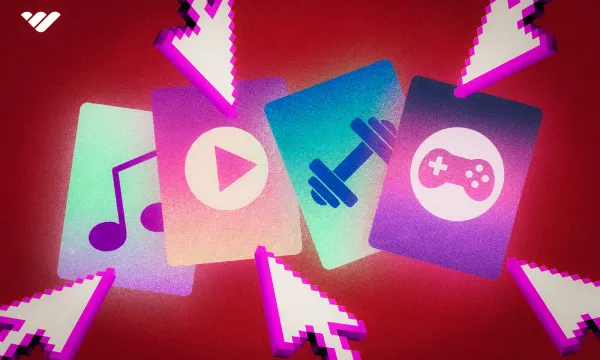Looking for a way to monetize your digital content and e-learning skills? With so many choices of digital products to make and sell, from ebooks and online courses to software and subscriptions, the choices are endless. It's no wonder many creators are turning to digital products as a lucrative and scalable solution.
But pinpointing the perfect product idea shouldn't be a guessing game. Instead, check out our list – we will look at them more in detail – of the best digital goods that sell like gangbusters.
The most profitable digital products for creators to sell include:
- eBooks
- Online courses
- Paid communities
- Software apps
- Subscriptions
With these options, you won't have to worry about spending time or resources on a product that might not sell. So, if you're looking to turn your skills into profits with low startup costs, enjoy easy passive income, and have some fun, too, this guide will tell you everything you need to know about the most profitable digital products to get started and how you can create your digital product today.
What is a Digital Product?
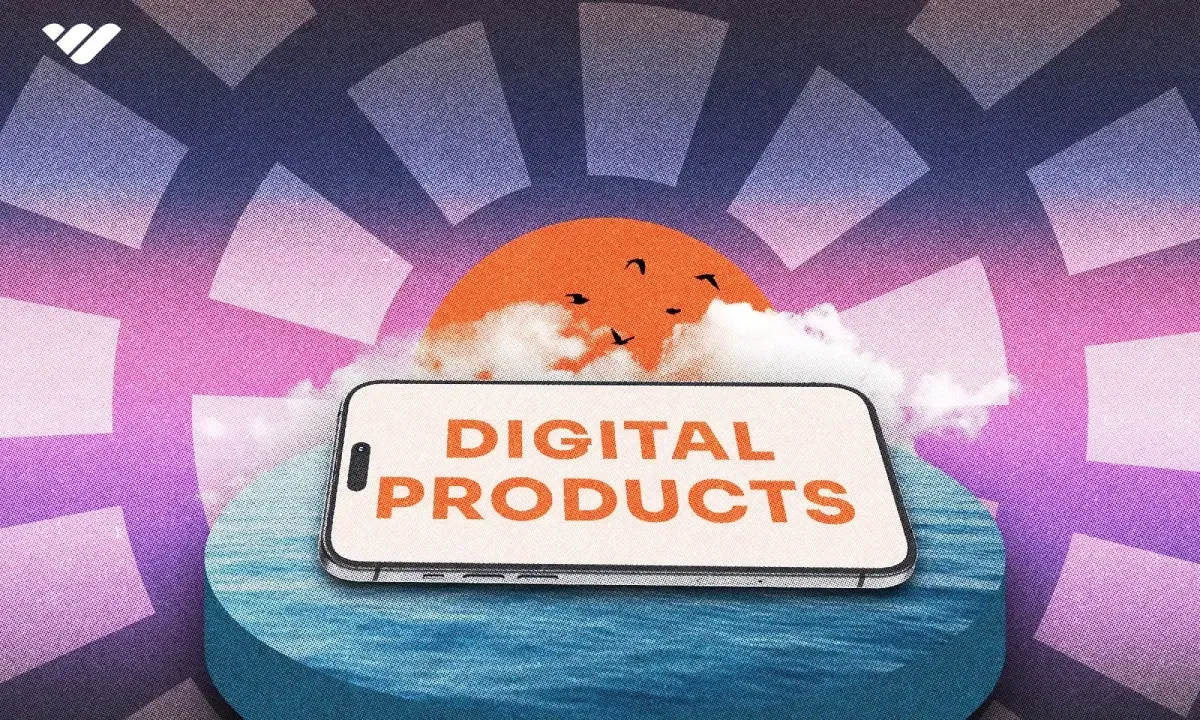
Digital products are virtual items you can't physically touch but can still enjoy and use online. They're the ebooks you read on your tablet, the downloadable guides you grab with a click, or the online communities you join with a few taps. Many popular digital products are delivered through email, a downloadable link, or accessed on a freelance marketplace or e-learning platform.
Digital products offer instant access and the freedom to use them wherever you want and are available 24/7, which is why they're such a hit with content creators as potential sources of income.
How much can you make selling digital products?
Why Sell Digital Products?
When you think about it, there are numerous ways to make money at home, but many of them require more effort, skills, time, and dedication than others. But with digital products, you can leverage YOU. Your expertise, freedom of expression, and creativity are already there to help you create an income online, making it easy to start. Aside from a low barrier to entry, what other reasons are there that make selling digital products a better option for content creators?
Minimal start-up costs
The great thing about digital products is that you don't need to break the bank to start selling. A laptop, an email address, and maybe a few subscriptions for an online learning platform, image & editing tools, or graphic design programs are all you need. As you continue selling digital products, your costs will stay pretty low, mainly just for the tools to manage sales and a good internet connection.
Simple to update
Depending on your digital product, changing, updating, or removing parts of it doesn't have to be difficult. One of my digital products is an eBook about Pinterest, and a week after launching it, I noticed several typos. In a few minutes, I was able to edit my eBook, upload it again to my online store, and resume selling the updated version with none the wiser.
Whether you're adding new features to a course, tweaking a design template, or updating some software features, the ease of making changes is a big win. This flexibility means you can keep your products up-to-date and valuable for your audience, helping your digital business stay on top of its game.
Big earnings potential
Unlike traditional products, digital products don't require physical inventory or shipping costs. This means more revenue goes straight to your bottom line, boosting your overall profitability.
Growth potential
For physical products, you risk selling out and having to restock to keep up with demand quickly. But with digital products, you can sell unlimited numbers without worrying about inventory. Whether it's dozens, hundreds, or thousands of sales daily, your digital product is always available, allowing your business to grow without hiccups.
Can replace your full-time job
Here's a fact – digital products can replace your full-time income. It's not unheard of for content creators to make a million dollars or more from selling digital products. With the right strategy and a bit of hard work, your digital creations could become a major source of income, surpassing what you'd earn from a traditional job.
But before you quit your full-time job and book a holiday to Australia, let's find the most profitable thing you can create and sell.
Most Profitable Digital Products to Sell
To get the most out of each digital good and service on this list, I'll share the product, how to create it, the time it takes to create it, the tools you need to create it, and examples of each digital product.
1. Ebooks
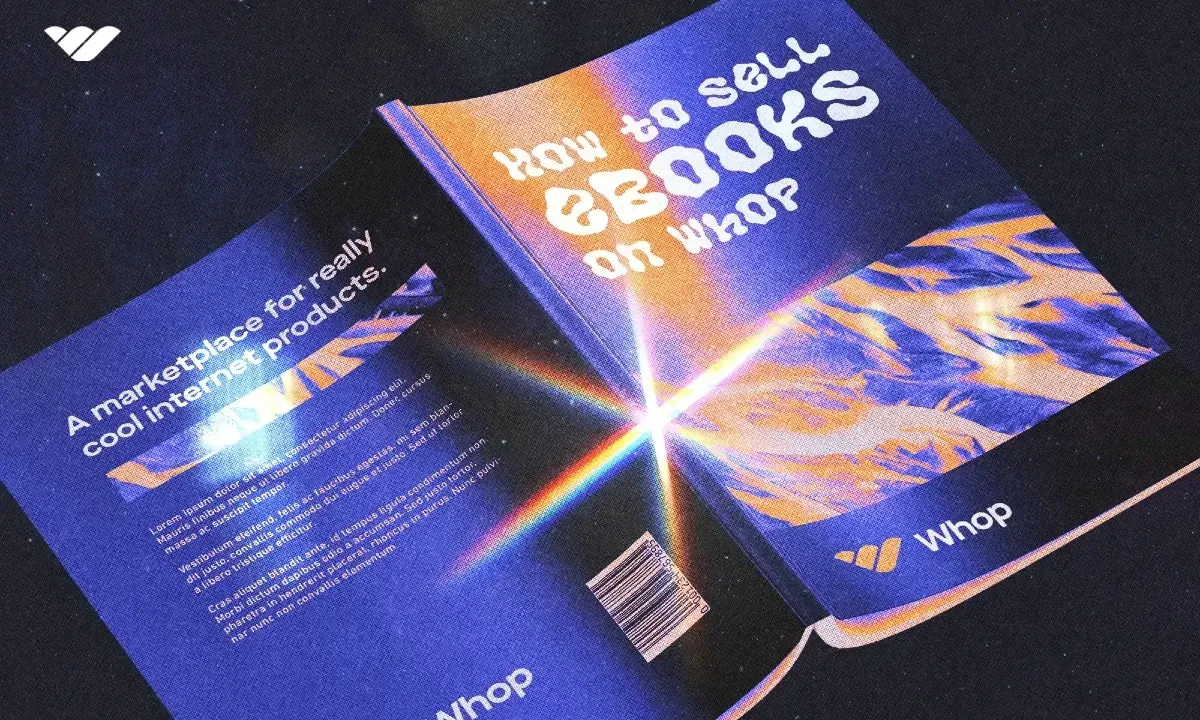
According to Statista, eBook sales are booming, with the market expected to rake in a whopping US$14.61 billion this year, making it one of the most profitable digital products to create on this list.
What is an eBook?
Ebooks are digital files that content creators can write and sell online. They're a popular way to share knowledge, stories, or advice with your audience, and they can be easily downloaded and read on various devices, like a Kindle.
A popular type of eBook is a cookbook. Many food bloggers and YouTubers create cookbooks by compiling the best recipes, tips, and cooking techniques they share online into a digital format. For example, YouTuber Julia Pecheco compiled her most viewed recipe videos to create her cookbook.

How to create an eBook
Difficulty level: Beginner/Easy
Time commitment: Around 72 hours
Pros:
- Easy to put together
- Opportunity for serial publishing
- Eco-friendly
- Low risk
- Ability to bundle for marketing purposes (i.e., course + eBook bundle)
Cons:
- Requires strong writing and editing skills
- It can be time-consuming for your audience to read and apply
Discovery phase
Start your eBook creation by pinpointing your niche and expertise. For instance, as a holistic health coach, you might create an eBook on self-joy – a topic you share on social media – that aligns with your audience. Review your past content and feedback to find a popular topic. Create a list of potential topics for a 15+ page eBook.
Research phase
After you make your list, check to see if your idea is related to any trends or current events. This can help boost sales and make your eBook idea highly relevant to your audience. For example, when ChatGPT exploded in November 2022, content creators jumped on the bandwagon and started releasing dozens of digital products on AI tools.
Creator Corrie Alexander was no exception. She started a YouTube channel about content creation and, later, AI. With her audience's increased interest in ChatGPT, she created an eBook, AI-Empowered Blogging.
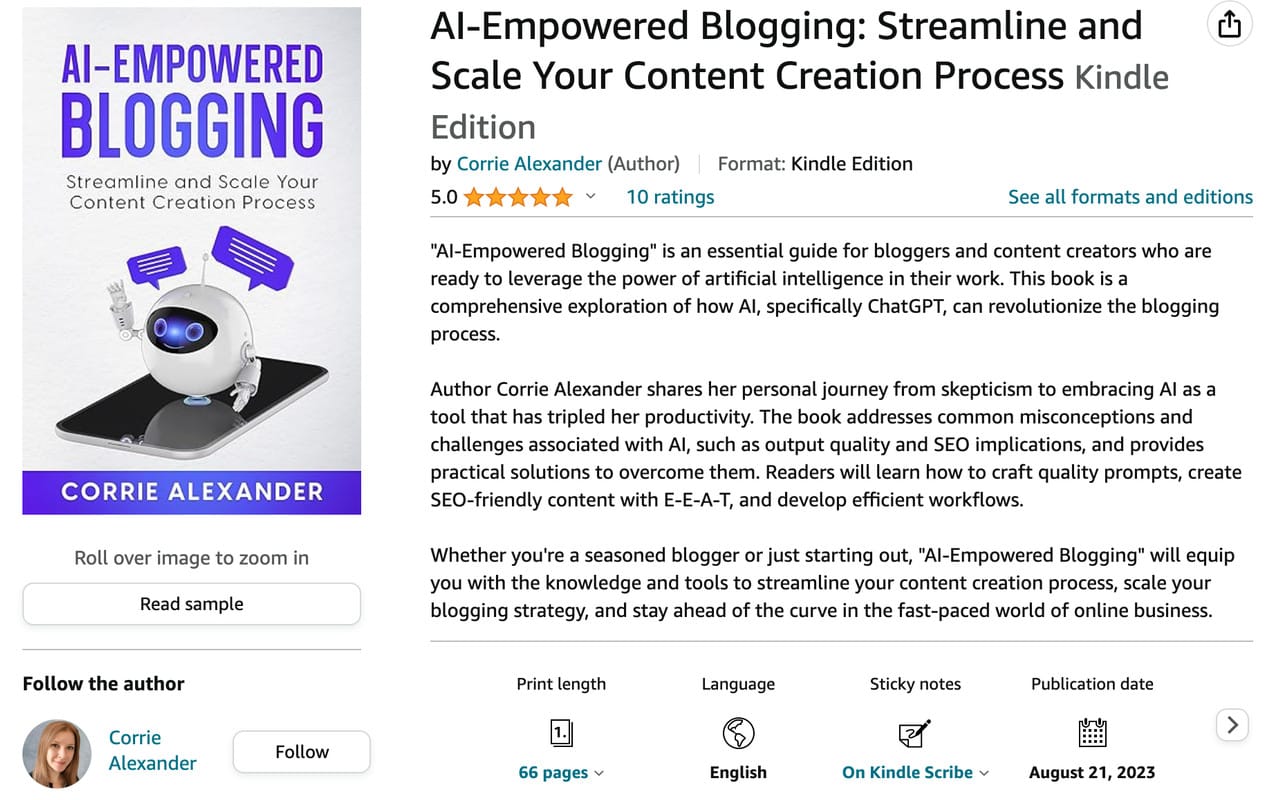
You can use tools like Google Trends, BuzzSumo, or even Reddit to see what people are discussing in your niche. Look for patterns or recurring questions that haven't been addressed. This can reveal gaps in the market that your eBook could fill.

Planning & outlining phase
Now it's time to create a detailed outline for your eBook, which acts as a roadmap for your content. Organize the information in a way that's easy for your audience to follow, whether chronological, sequential, or conceptual. Each chapter should focus on a key concept that's broken down into its key points to provide more clarity.
For example, if you're a life coach writing about self-care strategies, your outline might feature a chapter titled "Understanding Self-Care." This chapter could explore the definition of self-care and its benefits and address common misconceptions, offering a comprehensive overview for your readers.
If it's in your budget (and if you need help), you can use eBook writing software like Kotobee ($150), Atticus ($147), or FlipBuilder ($129) to help you format and design your eBook.
Writing an eBook phase
Take the time to write your eBook and follow your outline. When writing my eBook, I broke it down into 15 chapters and wrote 4-5 chapters a day. Sometimes, creating a goal for yourself – "I will write two chapters a day" – can help you stay motivated if you find writing difficult.
When writing your eBook, aim for clear and concise language. This means:
- Use an active voice
- Be specific with your examples to make your points more engaging
- Cut out redundancies
- Break up your text with headings and bullet points for easier reading
- Hook your audience with intriguing facts or questions
- Vary sentence structure to maintain interest throughout your eBook
Edit, add copyright & use beta readers phase
When editing your eBook, it's a good idea to read it out loud or use a text-to-speech tool like Dupdub to listen to your draft. This will help you focus on any redundancies and sentence flow issues.
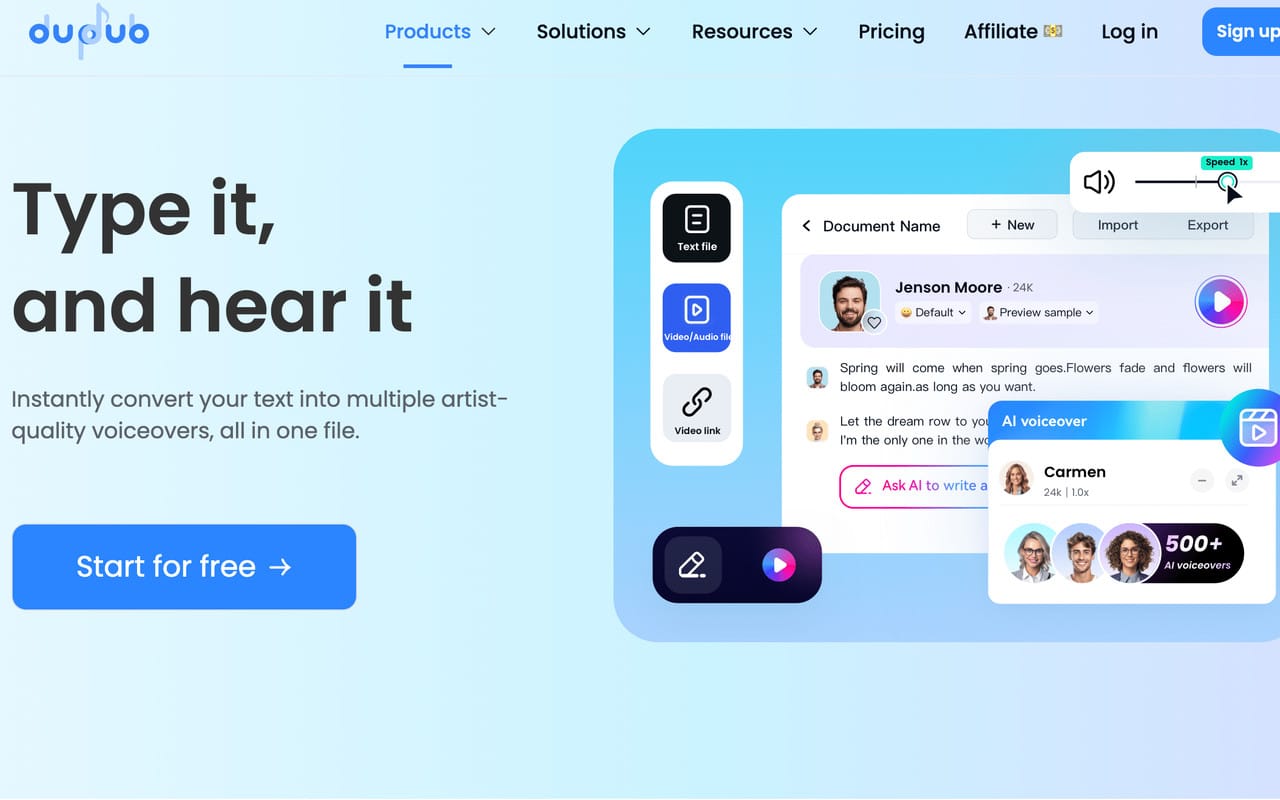
Once you've finished editing, look to gather feedback. Share your eBook with beta readers – subscribers from your email list or followers on social media – to gain valuable insights and further polish your work. And don't forget to add a copyright notice to your eBook. It's a must to safeguard your hard work and keep others from copying or distributing your content without permission.
Design and formatting phase
Here comes the fun part of writing an eBook – designing and formatting it. I used Creative Market to find an eBook cover design, but many creatives also use Canva, Visme, or Adobe InDesign to find or design an eBook cover.
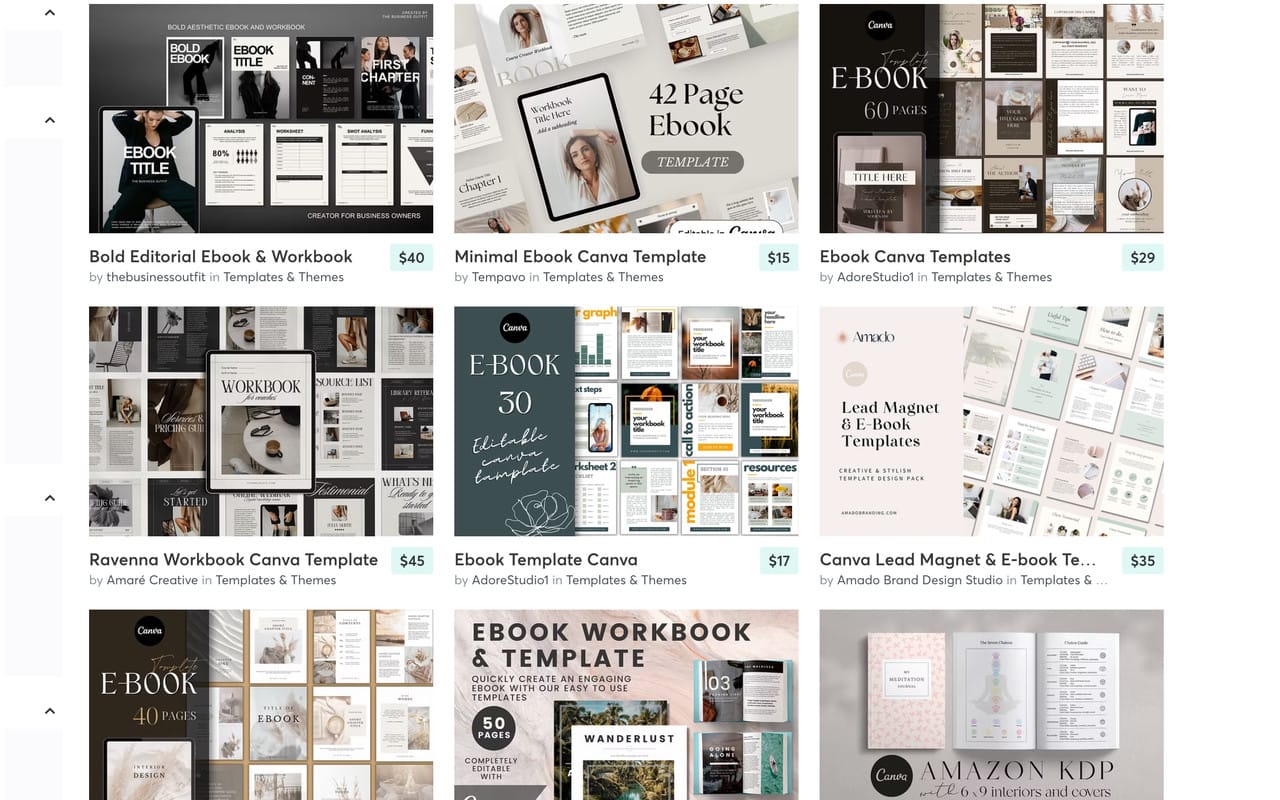
Once you designed and formatted your eBook, you can download it as a PDF or ePub file.
Keen to know more about how to sell eBooks? Click here!
2. Online Courses
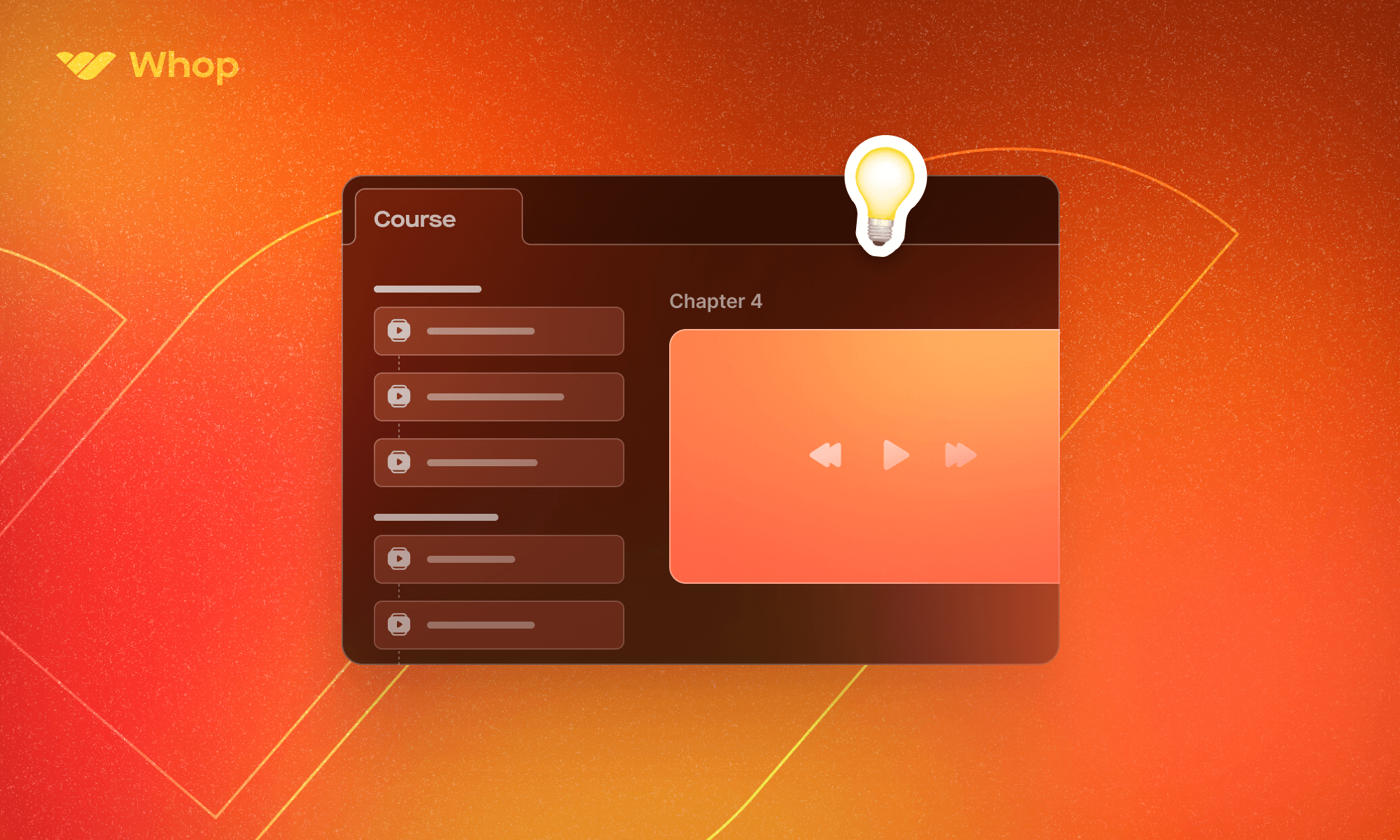
Out of this entire list of digital products, the most sold – and most popular – are courses at 35%, followed by eBooks at 7.3%.
Whether it's a video-based, text-based, or multimedia course, digital courses are easy, accessible, and popular.
What is an online course?
An online course is a structured way to share knowledge, typically hosted on platforms like Teachable or Whop. The course content is organized into modules and units, combining video and written content with downloadable resources like worksheets and templates.
You can choose from self-paced courses, live courses with real-time interaction, or a combination of both with added elements like group coaching calls. For example, mindfulness coach Michelle Dixon created a mindfulness hacks course for her audience that also includes monthly group coaching calls.
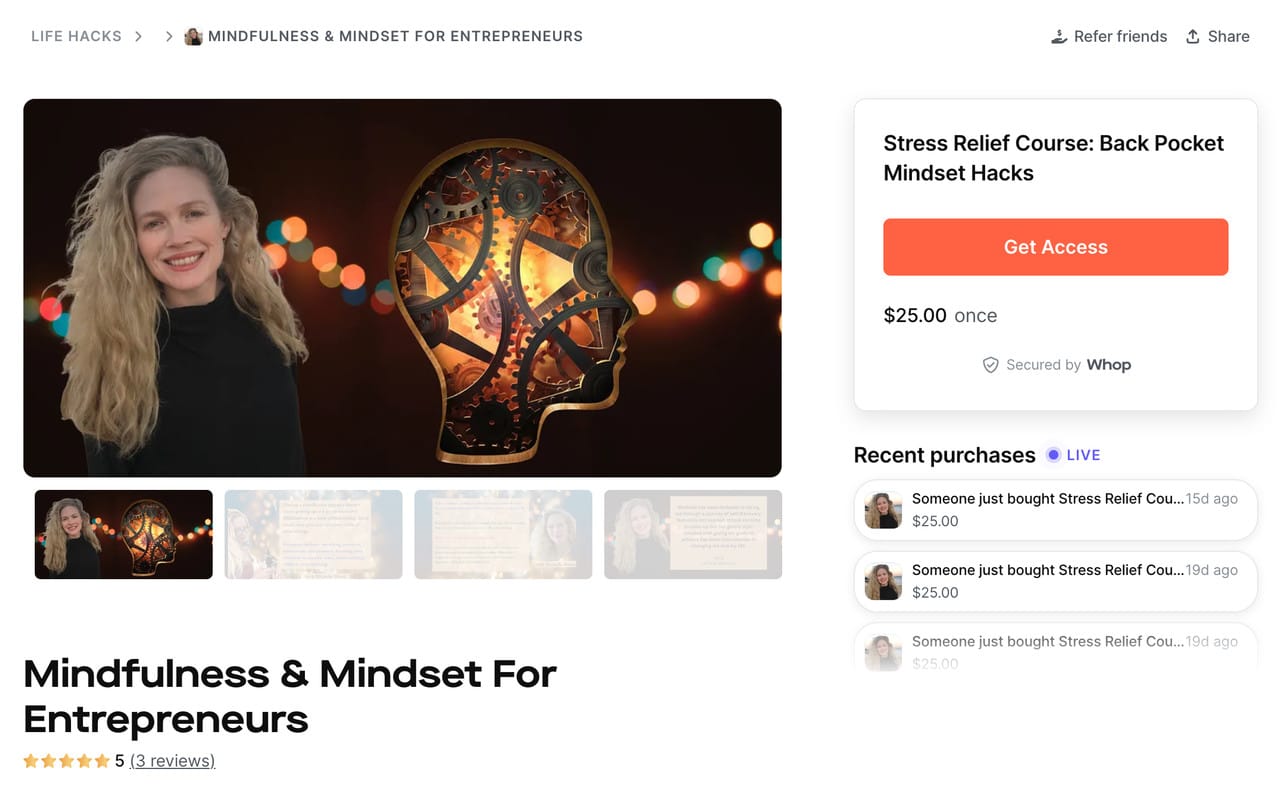
How to create an online course
Difficulty level: Beginner/Easy
Time commitment: 25 to 500 hours
Pros:
- Can charge more than other digital products (average price is $137)
- eLearning platforms may handle delivery, payments, affiliates, and even taxes
- Appears to be desirable and prestigious to people
- Gateway to higher-priced offerings like 1:1 coaching
Cons:
- Can require – but not always – pricy equipment like a good camera, ring light, or microphone
- Requires sales funnels and marketing efforts
- Piracy issues if you don't choose a platform with high security measures
Define the topic & learning objectives phase
The first step to creating a course is nailing down your topic. Your topic appears in social proof, questions you get over and over, and social media engagement.
You can also look at what types of course information are popular with students to help you figure out a niche topic. For example, health & fitness and software & technology courses have seen big boosts in enrollments since COVID-19.
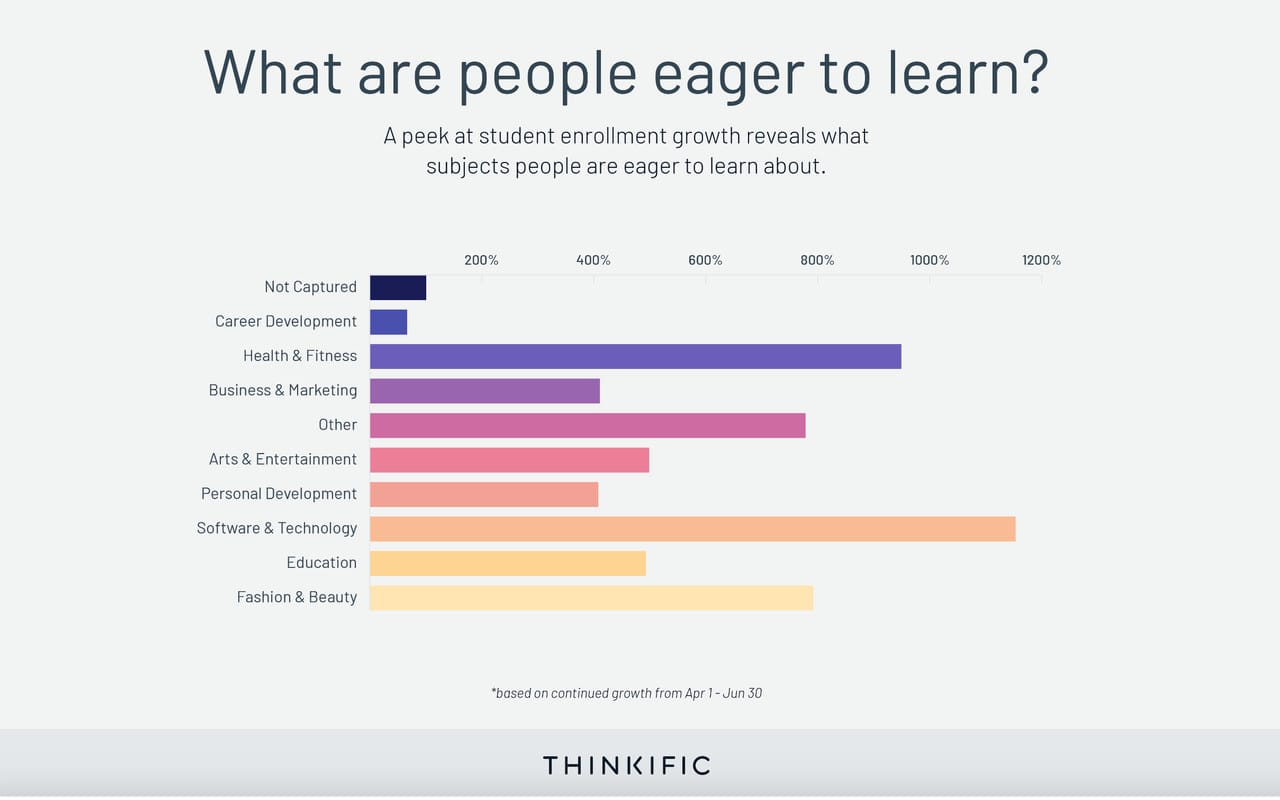
Ideas of online courses you can make:
- Calligraphy
- Fitness and running
- Proofreading
- Real estate
- Online dating
- Web design/programming
- Yoga and Wellness
- Baby Led Weaning
- Social media marketing
- Public speaking
- Interior design
Once that's all sorted out, it's time to create your learning objectives. What key takeaways do you want your students to have by the end of the course? Use quizzes and action steps to help students succeed with their learning objectives.
One of the questions I always receive from my newsletter, on Facebook replies, and from blog comments is, what are the steps to becoming a freelance writer online? Knowing that most of my audience needed help with that topic, I created a course laying out the steps to freelancing.
Plan course content & materials phase
Once you've chosen your course topic, it's time to break it down into smaller, more manageable sections or modules. For instance, if your idea is an Instagram photography course, you could have a module on composition, one on lighting, and another on editing. This way, you're making it easier for your students to digest each part of the subject, one step at a time.
Next is creating all the supportive materials for the course. Canva is a free image editing tool where you can create printables, planners, eBook covers, and more. You might include workbooks, templates, links to a private podcast, and more to your course. The extra material makes your course offer much more enticing and adds a nice visual element to your sales page too. Just check out the Language Life course by linguist tutor Lindsay and all the materials that come with it.
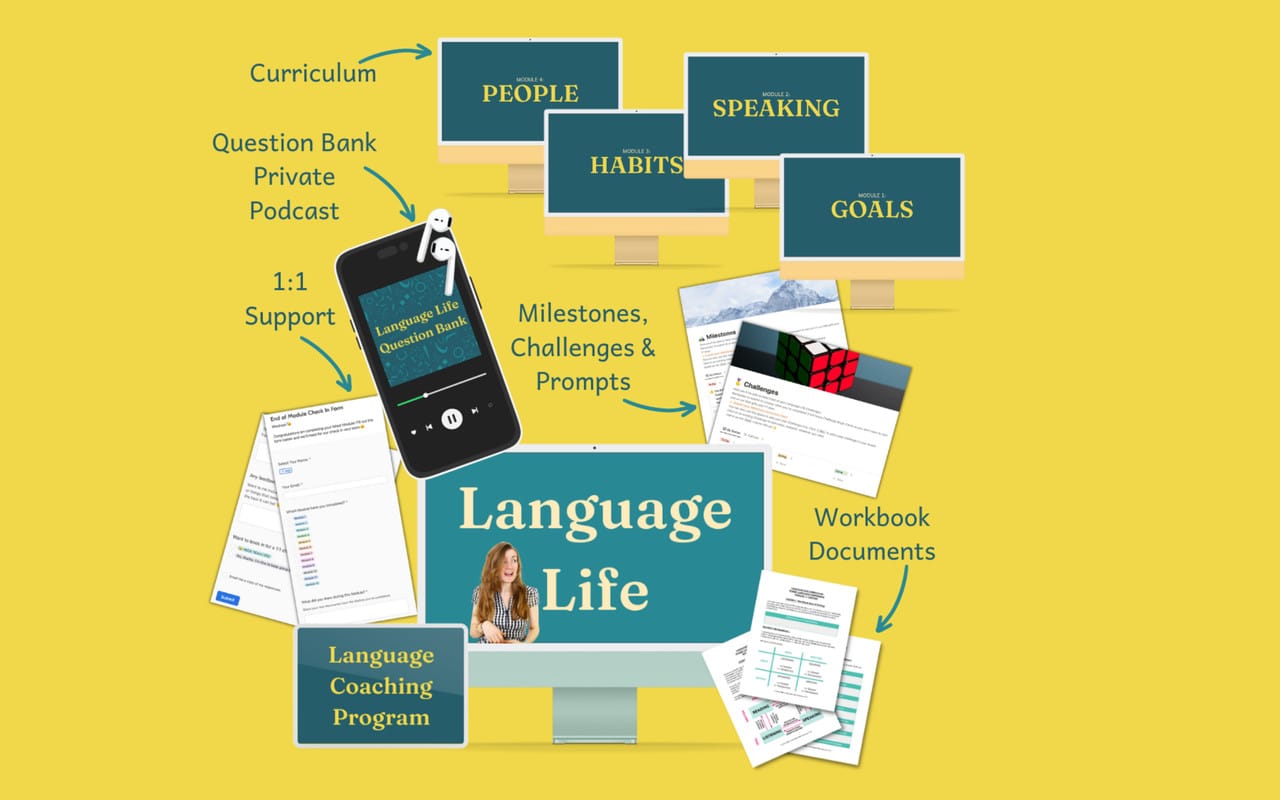
Make an online course phase
It's time to roll up your sleeves and dive into the fun part – creating your course lessons. Whether you're more of a writer or a fan of hitting that record button, this is where you bring your lessons to life. Get those words flowing or set up your camera, and start creating those modules into engaging, informative lessons that your students will love. If you go with video lessons, here are some pointers to help you get more comfortable on camera:
- Pick a spot where you feel comfortable and relaxed. It'll make a difference in how you come across on camera.
- Talk like you're having a conversation with a friend. It keeps things light and easy to follow.
- Don't sweat the small breaks. They give you a breather and let your audience soak in your words.
- If you're excited about your topic, show it! Your energy will keep your audience hooked.
- Begin with short videos – under 3 minutes – to get the hang of it, then gradually go bigger.
Remember to save your written lessons within one program like Google Docs and a folder or external hard drive for your video lessons.
Read this guide to learn more about creating and selling online courses with Whop
3. Paid Communities

A paid community is a great digital product idea for creators who thrive in social situations and enjoy sharing ideas with a group of people. And with 70% of creators who started a paid community generating a median of $1,000/month, it can make for sweet passive income too.
However, starting and maintaining an online community can be challenging, as Jimmy Daly, CEO of Superpath spelled out when reviewing his year in business.
"Either our paid offering [Slack community] wasn't compelling, or not enough people knew about it."
To see paid communities thrive, owners need to know the value of having a community and foster a safe environment for discussions, questions, and networking. But they also need to have a strong strategy to grow their community.
What are paid communities?
A paid community is a space online where a creator can engage with their dedicated followers. Members pay a fee to join, and in return, they get access to special content, direct advice, and a tight-knit group of like-minded individuals. Loneliness is rising among the Gen-Z crowd, so a paid community is the ultimate space for fostering meaningful connections.
There are different types of online communities – based on whether you want it for business or for a more laid-back feel – you can set up:
How to create a paid community
Difficulty level: Intermediate/Challenging
Time commitment: Under an hour to create + more time for ongoing support
Pros:
- Improves brand awareness
- Builds credibility and trust
- Networking potential
- Deep audience insights for future digital products
- Scalability potential
Cons:
- Time consuming
- Can be difficult to build that initial user base
- Might have to deal with negative behavior
Choose the right platform phase
When choosing a platform for your paid community, focus on your end vision. Mighty Works is geared towards coaches and entrepreneurs to help them grow their businesses. Skool is aimed at course creators who want a deeper engagement with their students. Discord, on the other hand, is a great option as it is a highly customizable platform that facilitates real-time chat, video, collaboration, gamification, and a whole range of other integrations. Whop is for every creator, from online coaches, to business advisors, course creators, travel communities, gaming groups, and more.
For example, ISA Virtual Coaching is an online 'sailing mastery' community with options to take part in online courses, weekly community workout sessions, live chats with coaches, community conversation and forums, and more.
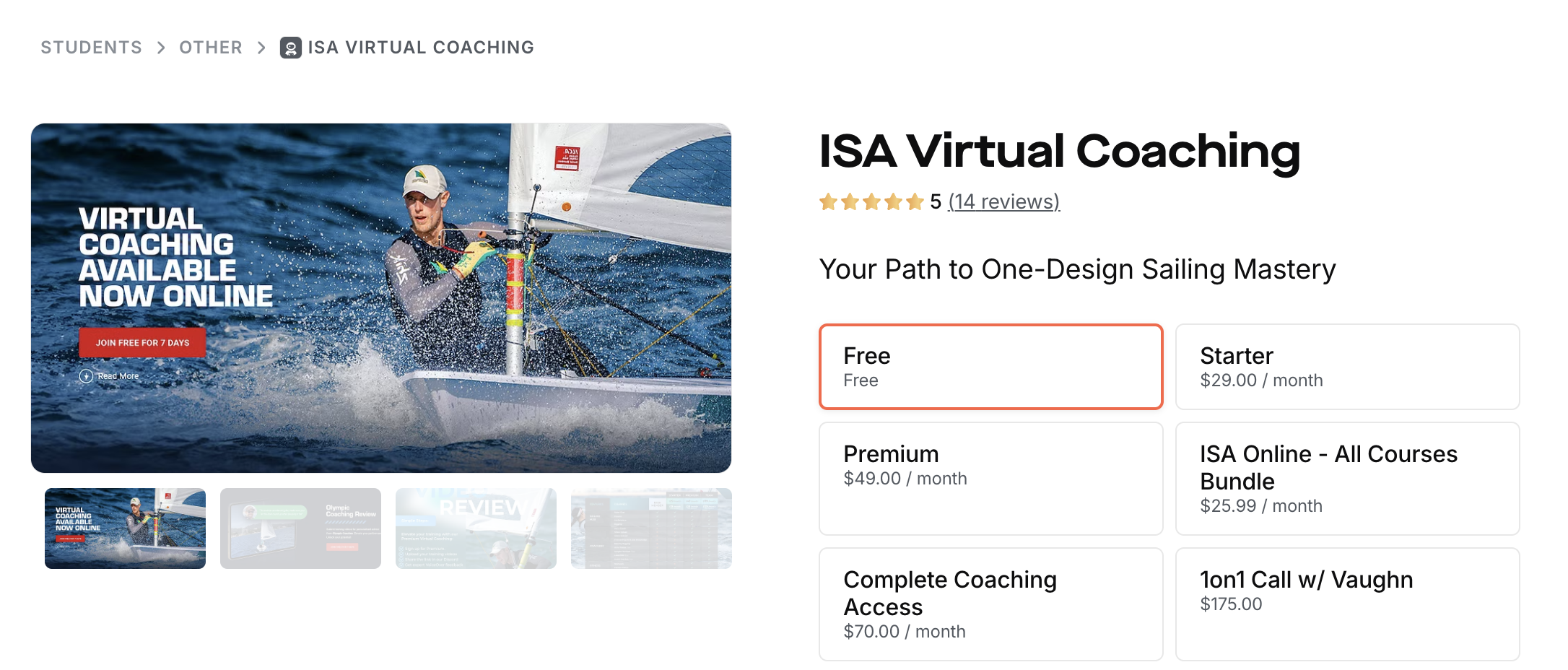
On the other hand, GoldBoys is a sports picks community where members get to chat with experienced cappers, receive high-quality picks to tail, enter giveaways, and get coverage of all sports.
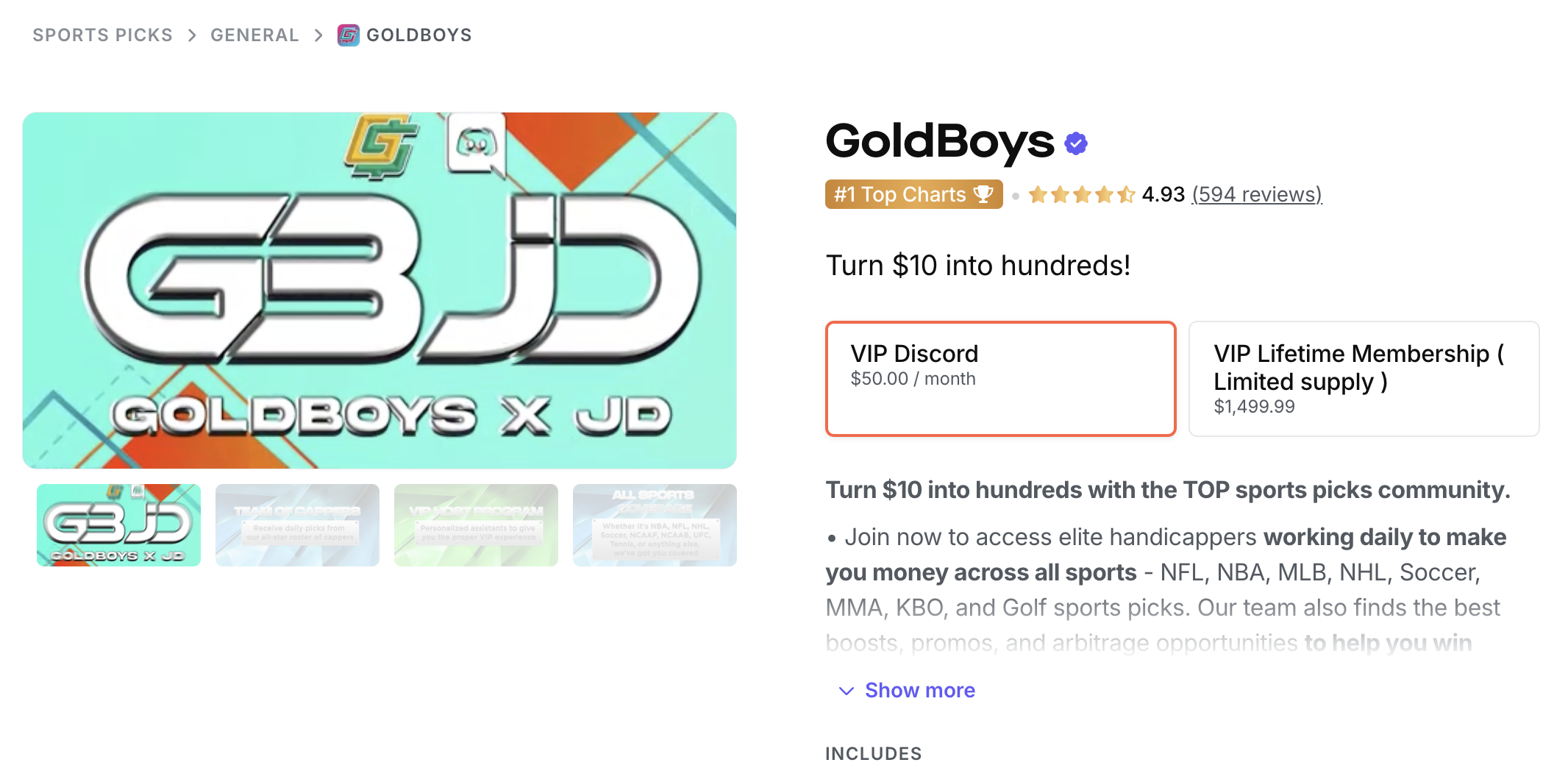
Once you pick the platform, start customizing your settings, channels, or groups to entice discussions and interactions.
Plan your community's purpose & pricing phase
Make sure that you state the goals and what your community brings to the table. For example, if your community's goal is to help freelancers grow their businesses, exclusive content might include access to expert-led workshops, job boards, and a supportive network of peers. Peak Freelance's Slack community falls under this purpose. While this community was once paid, it has since opened up to any freelancer wanting to join. The creators wanted to make their training accessible to anyone needing it.
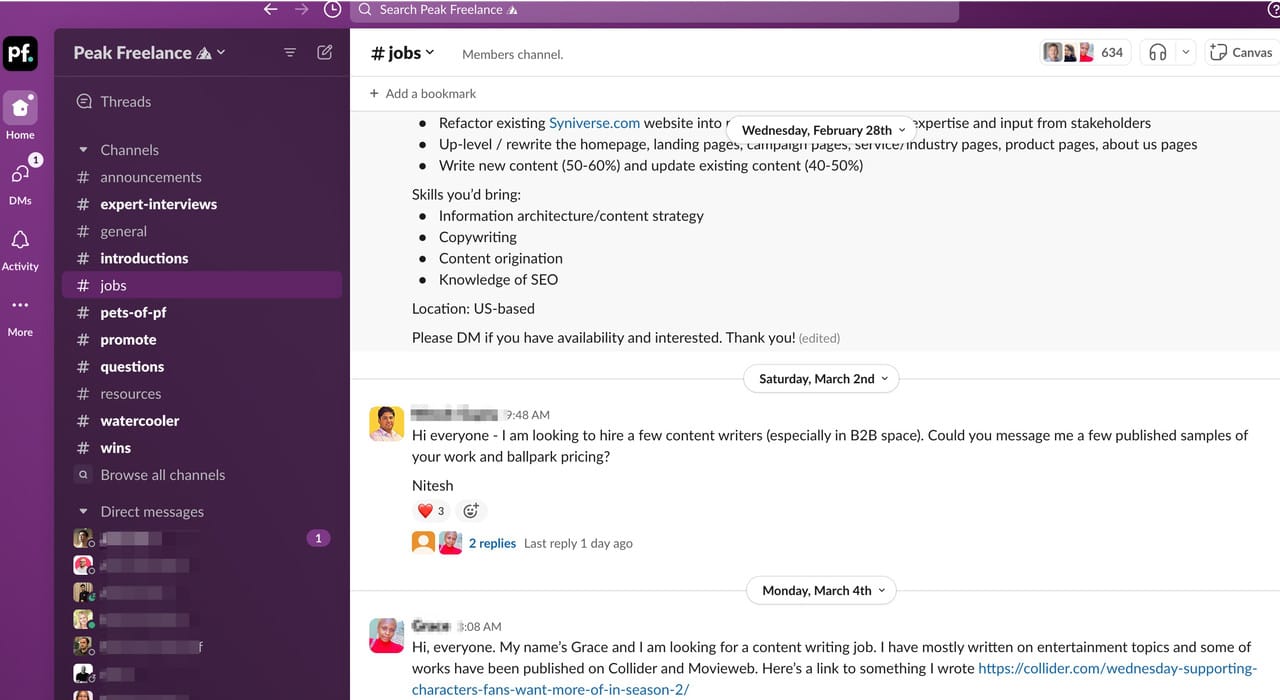
Set a pricing structure based on the perks your members will get. Whether it's monthly subscriptions or tiered membership levels, make sure the cost aligns with the value you're providing. Typical prices for an online community range between $20 and $100+.
Develop exclusive resources phases
One of the reasons members pay a subscription to an online community is the exclusive content they receive. These can be anything from expert interviews to access to key figures in your industry to personalized advice and more. For example, Peak Freelance provides exclusive interviews from CEOs and content leads like Rand Fishkin, former CEO of Moz, Ryan Law, formerly of Animalz, Tim Soulo of Ahrefs, and Devesh Khanal of Grow and Convert.
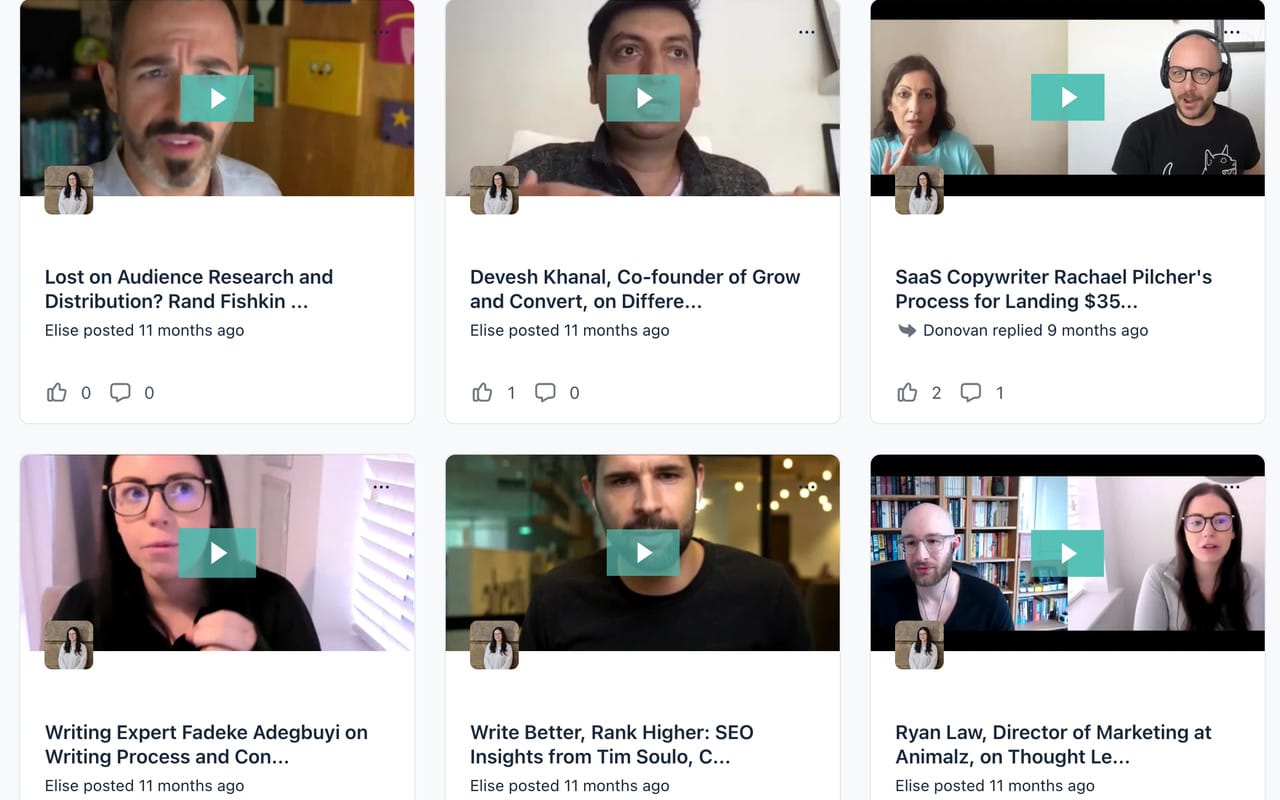
This step will probably take you the longest, and many content creators end up accumulating content for their community as they grow their audience over a year or two. Also, note that creating fresh and new content is an ongoing process for many online communities, and suffering from burnout is a real thing for you.
4. Software

Software applications are among the most profitable digital products to create, but they can take months to build, test, approve, and market.
You'll need a good handle on various programming languages, frameworks, and software development best practices, along with the ability to put these skills into practice. If you lack the time or don't have the skills, you can also hire a programmer to develop your software product.
Popular software to make are SaaS tools. For example, Cookgroup.tools created a landing page builder to help people build websites.

While you could use no-coding apps like Softr, Bubble, or Bildr, which have free plans, to create your software product, you run the risk of not being able to fix bugs or maintain the app if issues crop up. That's why it's a better choice to develop your own software product.
What are software and apps?
Software applications like games or SaaS products help us with specific tasks on our devices, from staying organized and entertained to connecting with others and learning new things. You can use a variety of devices for software, including smartphones, tablets, and computers.
Although software products are extremely time-consuming and require programming experience, the potential for a six – seven – or eight-figure business is plausible.
Nathan Barry began an e-training business over a decade ago by selling eBooks, templates, and other digital products, and it was very successful (making six figures a year from an eBook wasn't normal back then).
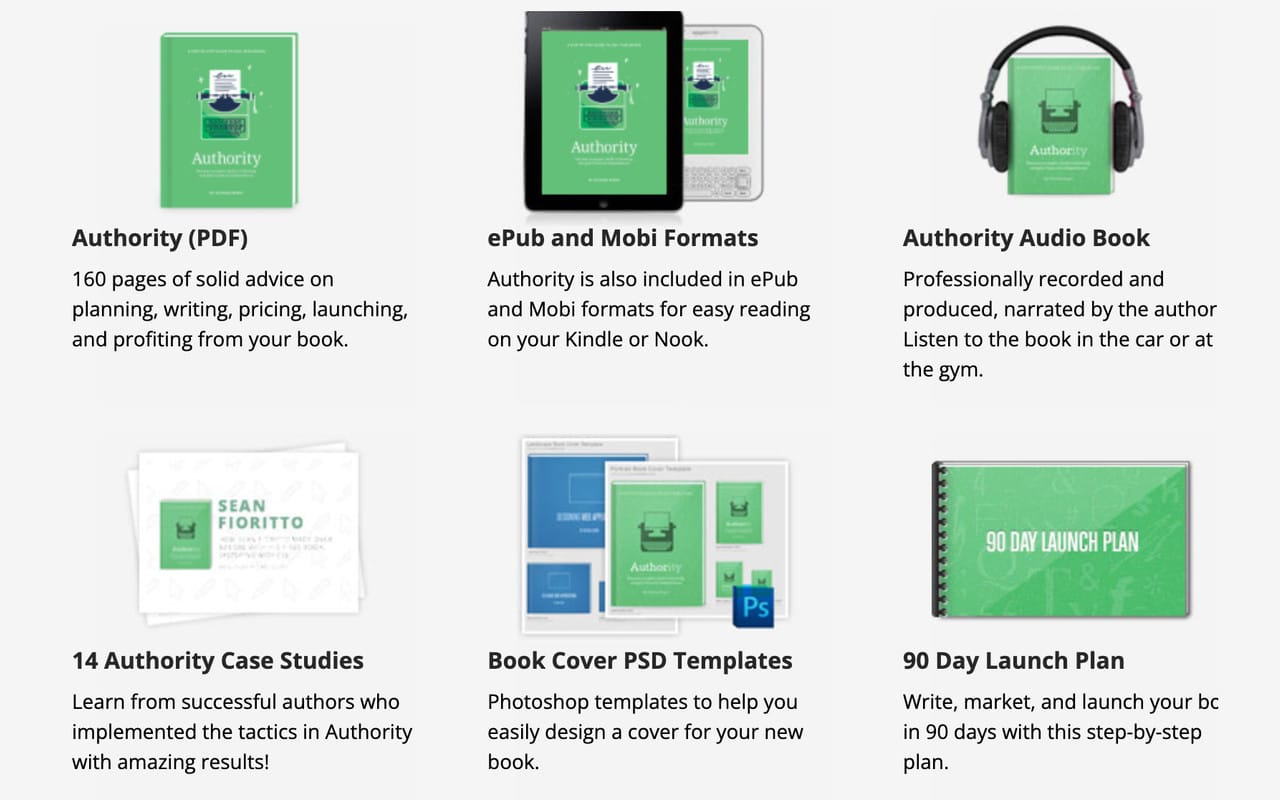
But in 2014, he left that profitable business and went all in with a new software product: Convertkit. And now? His email marketing software product generates millions of dollars a month.
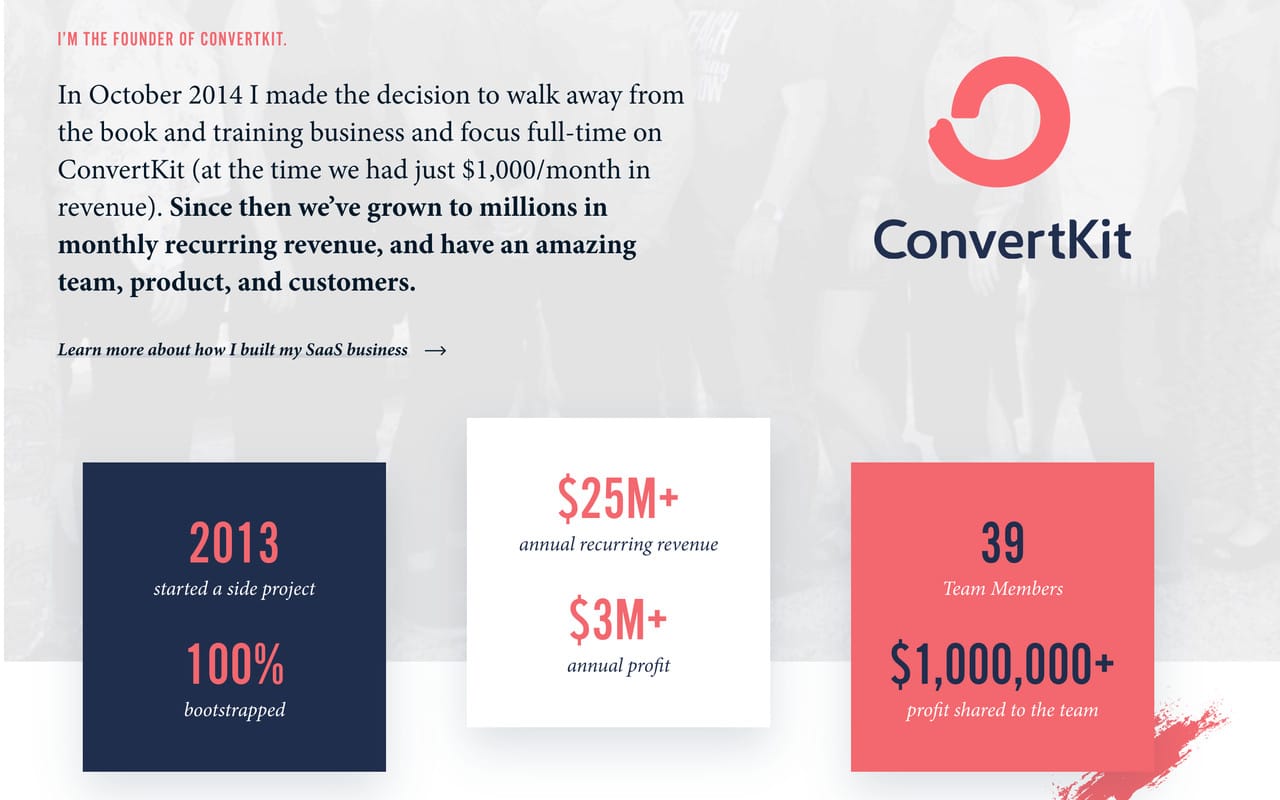
How to create a software product
Difficulty level: Advanced/Difficult
Time commitment: 3-6 months or more
Pros:
- Possible to make millions of dollars
- Great recurring revenue model
- Ability to sell a business that has customers
- Ability to attract VCs
- Raise funding
Cons:
- May have to hire it out if you're not a programmer
- Ongoing support and maintenance (sorting out bugs and compatibility issues)
- Upfront time commitment
Form your development team & choose a platform phase
You shouldn't create a software product alone. Instead, form a team with coding, design, and testing skills. If budget or expertise concerns you, hire freelancers to round out your team.
When choosing a platform, create versions of your app specifically designed for the operating systems your users are on. If you want your software app to be a desktop app, you’ll want a native version for Windows and, if possible, for Mac versions. Since most people are on mobile – if it makes sense – be sure to develop versions for both iOS and Android platforms. For example, you can download Evernote, the note-taking app, on Mac, Windows, iOS, and Android or as a web extension.
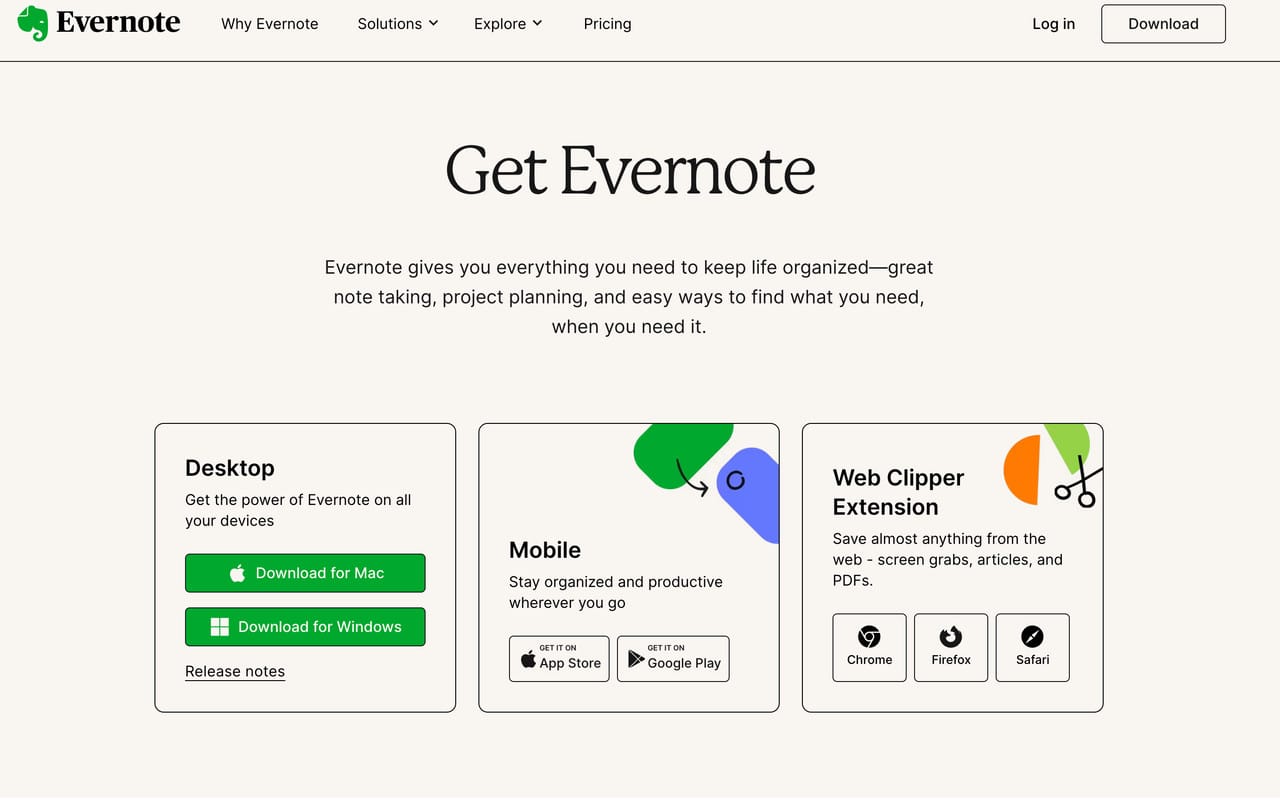
But if creating full versions of your app for mobile platforms isn't practical or relevant, you can offer a scaled-down version or an accompanying app.
Identify & validate the problem phase
Nathan Barry initially couldn't find an email platform to sell his eBook specific to bloggers and creators. The email providers available catered to small businesses. He found a gap in the market and focussed on creating an email marketing platform for creators. For you, spend time finding a gap that can be solved with your app or software product. Check for competition to make sure your idea hasn't already been created.
Outline features & create mockups phase
With a solid, innovative idea, it's time to design the frameworks and outline the core features of your software application or product. Make sure to create several mockups of the user interface and UX design.
Begin coding, running tests & gathering feedback phase
Have your team work on coding the back-end and front-end of your software product. This step typically takes months and sometimes years to get right. You'll also want to run tests during iterations to catch any glitches or bugs. Check that everything works on different devices and that the user experience is smooth. This is also the time to get some feedback so you can go back and modify or change aspects of your software. You can start launching your software product when everything is in tip-top shape.
Is software your calling? Read this beginners guide on how to sell SaaS the right way
5. Subscriptions

The subscription model is popular with physical products like makeup, pet toys, or meals. People pay a monthly subscription, and in return, receive their product. But it's also popular with creators selling digital products. And according to WorkWeek, this model is expected to reach a staggering $1.25 trillion by 2025. Now is the time to add subscriptions to your side business as a digital product idea.
What are subscriptions?
Digital subscriptions are where customers pay a monthly, quarterly, or annually recurring fee to get access to a product or service. Subscriptions can be memberships, paid newsletters, a business service, or streaming options. For example, Lindsay and Bjork Ostrom started Pinch of Yum to share healthy recipes. Over the years, commenters asked how they could start a food blog. Lindsay and Bjork decided to open up the Food Blogger Pro Membership.
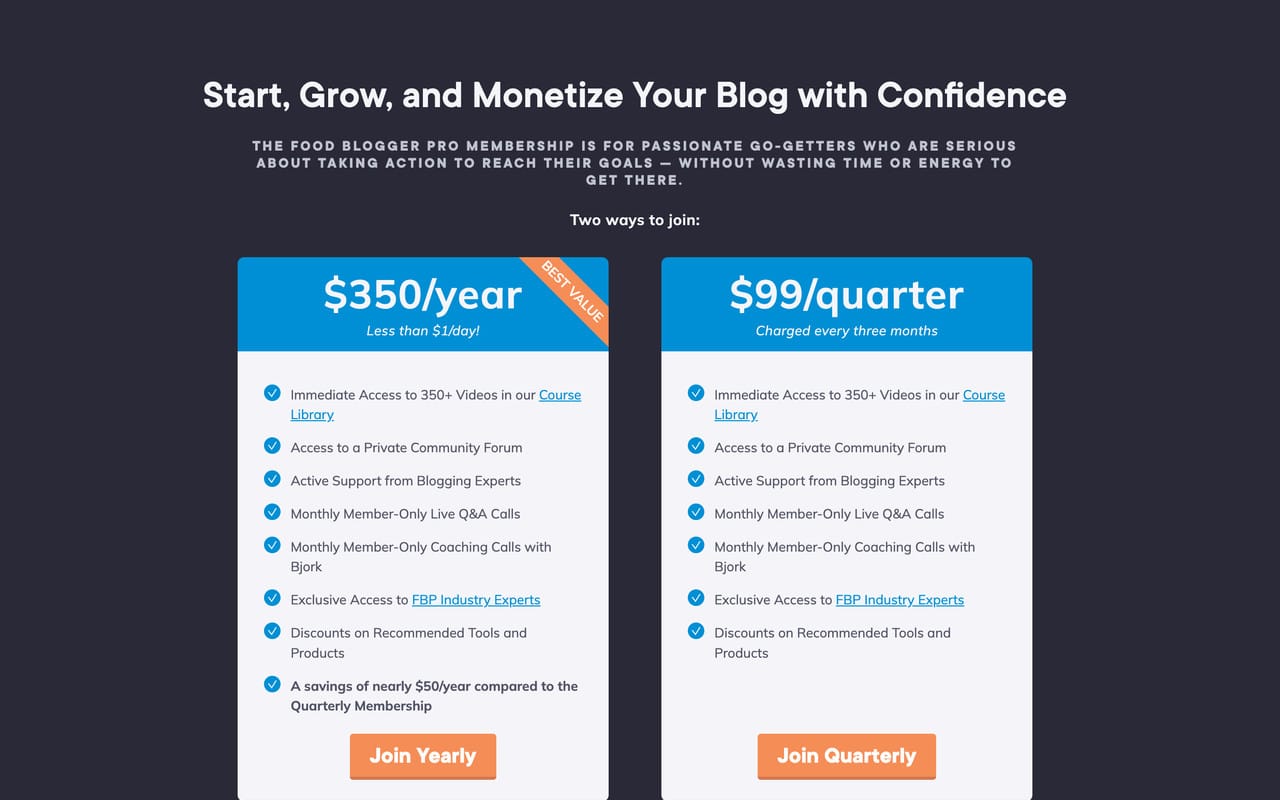
Their membership provides a community forum, access to industry experts, monthly Live Q&A calls, over 350+ videos, and more.
Or, if you enjoy writing, you can monetize an email list on Substack. Kristina God is a prolific writer on Medium and she started her Online Writing Club to dish out exclusive content on monetizing on Medium, and Substack (yes, very meta!).
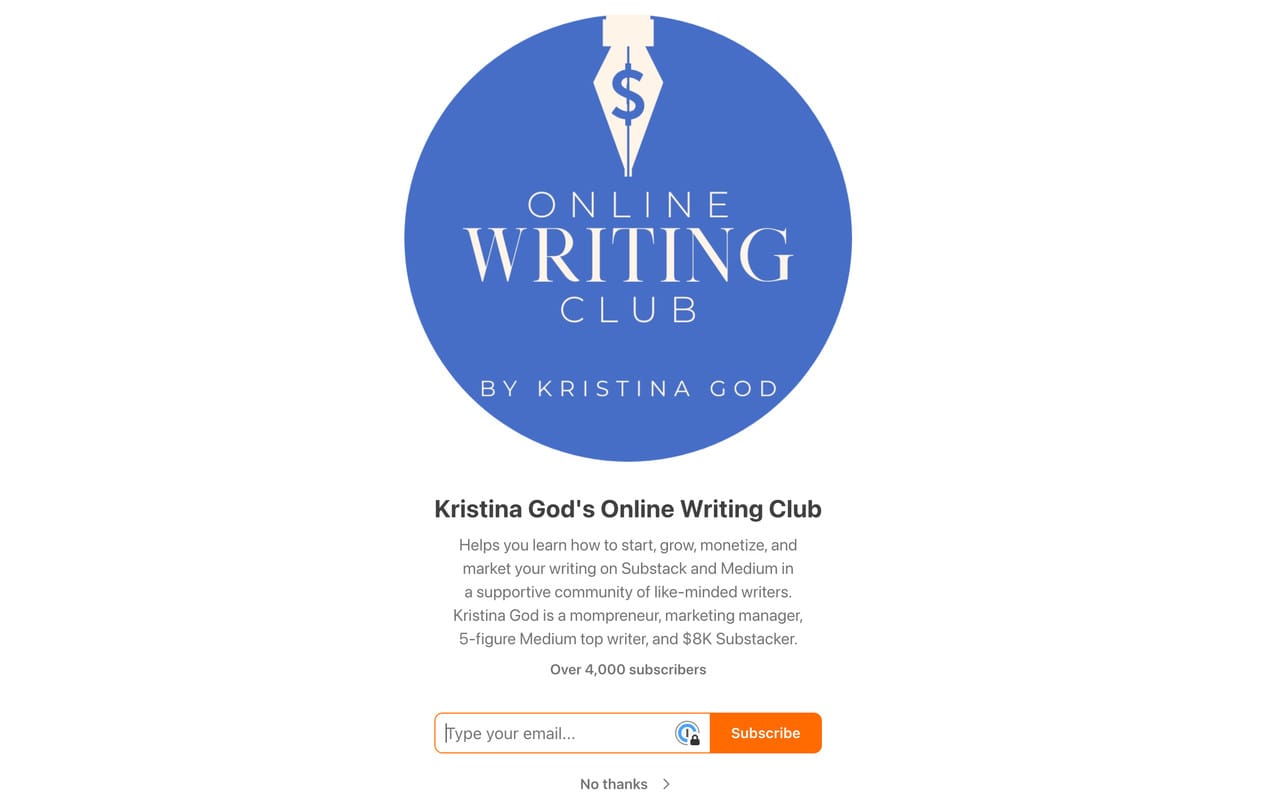
Other digital product ideas include a file-sharing subscription, a digital art and design subscription, a book of the month subscription, or a stock photo subscription.
How to create a subscription
Difficulty level: Easy/Beginner
Time commitment: 24 hours to start + 4-8 hours/week
Pros:
- Easy to run and manage
- Recurring revenue
- Create long-term customer relationships
- Collaborative opportunities
- Potential for upsells
- Consistent growth
Cons:
- Subscriptions often include content that you can find for free.
- Burn out of having to create regular content
Subscription model option phase
When creating a digital product, see if a subscription would be a better fit than a one-off purchase plan. Suppose your idea is bigger than one product. In that case, having the option for customers to opt-in on a recurring subscription to access new challenges, training, or templates is better than offering each product separately.
For example, coaches and consultants often provide a membership for live coaching calls as this is an ongoing, exclusive relationship. Liam Evans does this with his mastermind community, offering live weekly calls, private templates, and access to The Network community.
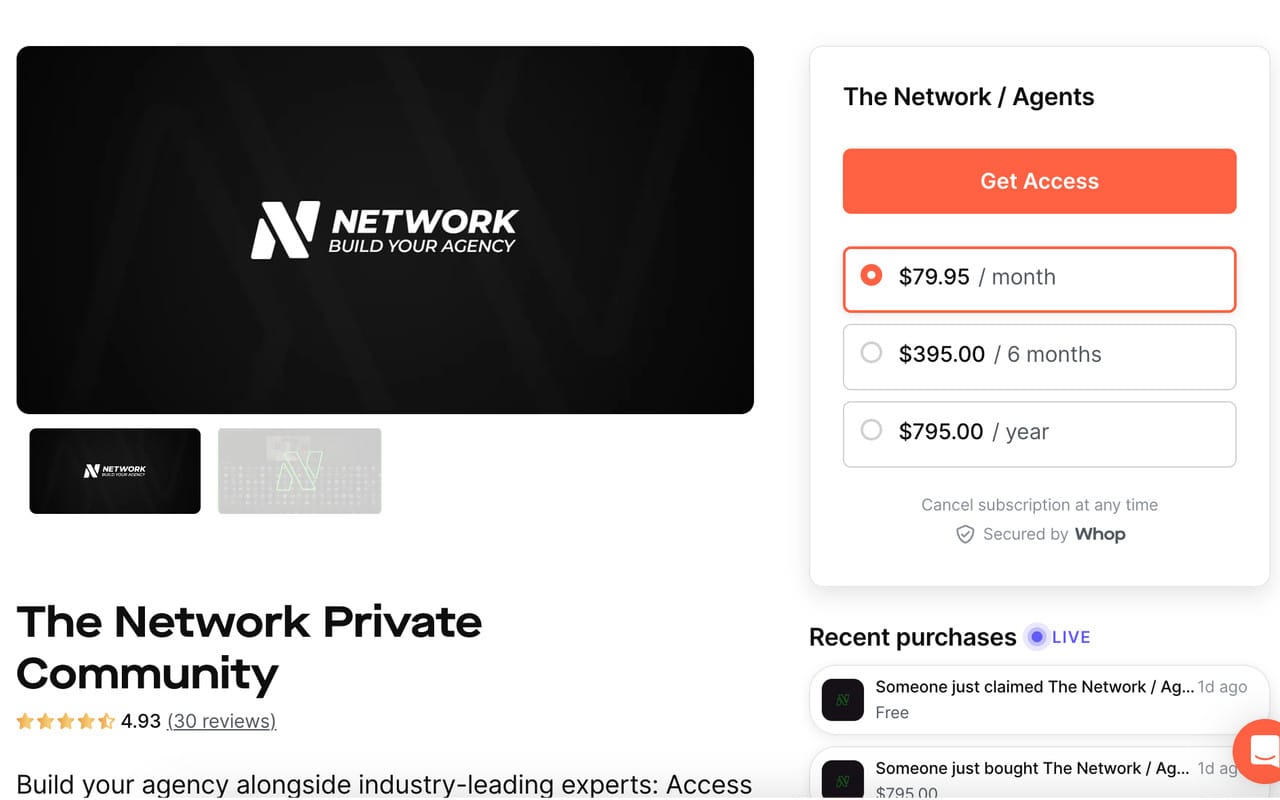
Subscription offer phase
Decide what you'll offer in your subscription. Similar to setting up an online community, will your subscription have live calls, forums, or access to exclusive content? A good gauge for what to offer is to offer only a limited number of products so that you can unlock new ones throughout the year, increasing the incentive value of your subscription.
Set terms, conditions & marketing phase
It's time to get all the logistics out of the way, like the auto-renewal process and how someone can cancel their subscription. From there, start thinking about how you can market your subscription. Some places include:
- Your email list
- On social media
- On Youtube
- Offer free trials
- Webinars
- Online marketplaces (like Whop)
6. Online Consulting Services
According to ZipRecruiter, the average freelance consultant makes around $48 per hour (about $100,000 a year), making it a decently profitable side business. You set your prices, so you can charge as much as the competition for your niche—and some niches are extremely profitable.
What are online consulting services?
Consulting is a professional service where clients pay for one-on-one calls with you to discuss their specific situation and receive professional advice about what they should do to succeed.
The first thing that might pop into your head is a tax consultant or financial advisor, and while this is the same job, there are all sorts of other topics for which you can provide consulting services.
While some consultants have brick-and-mortar offices where they offer in-person consultations, it can also be sold as a completely digital service. Who needs in-person chats when you can just meet up online?
This flexibility makes it one of the best digital products to sell. All you have to do is switch your consultations to video calls and share digital files rather than printouts, and voila—you're an online consultant.
It's really that simple. You can also reach way more people this way since you can work with clients from all over the world.
Here are just a few typical examples of different types of consultants:
- Law consultant
- IT consultant
- Fitness consultant
- Career consultant
- SEO consultant
- Cybersecurity consultant
- HR consultant
- Sales consultant
- Social media consultant
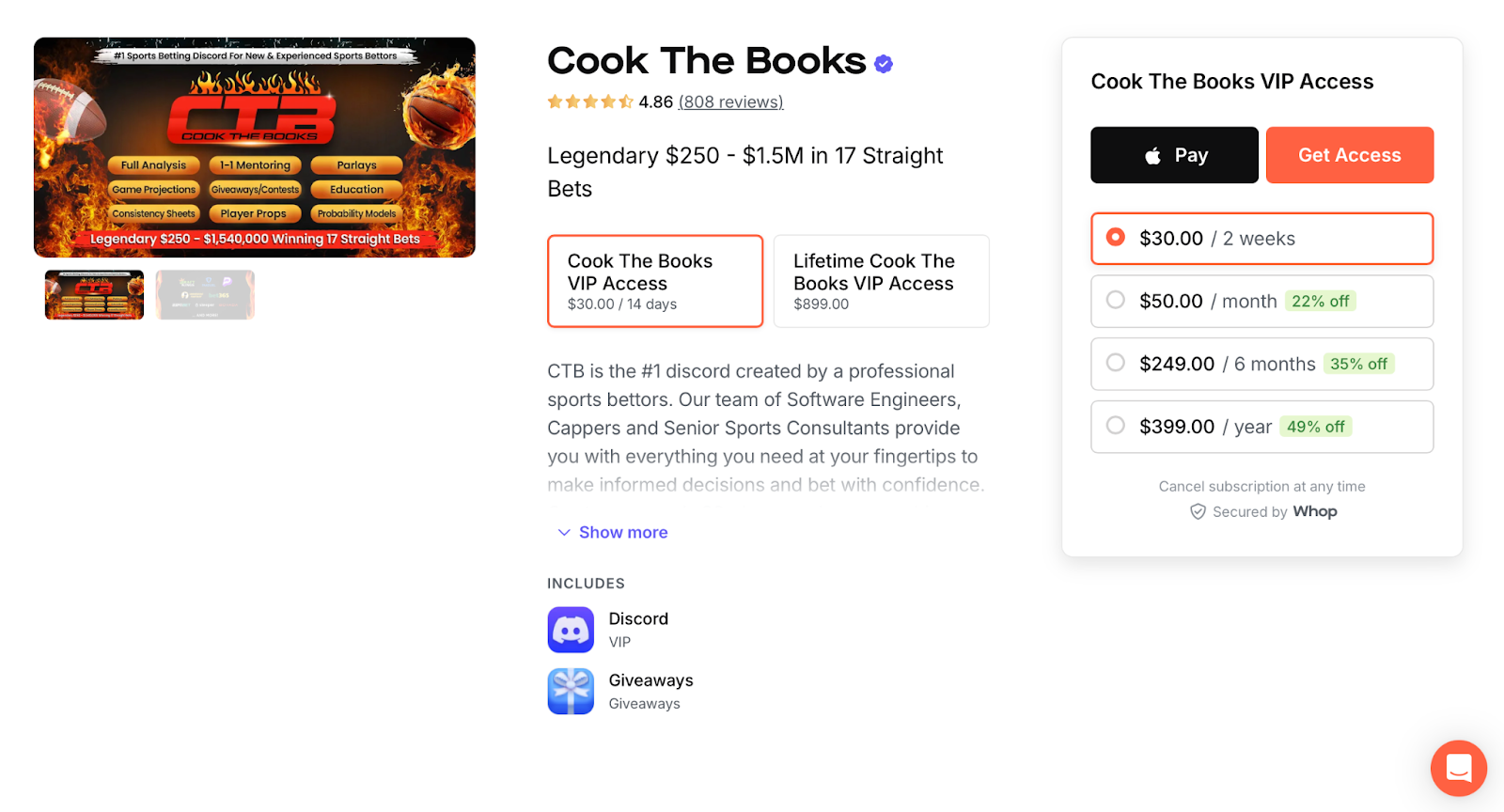
Because you'd be working as a freelance consultant, it doesn't really matter where you got your expertise—it could be from your day job, your hobbies, a previous side business, or anything else. All that matters for growing your business is delivering results and creating satisfied clients.
How to start a consulting business
Difficulty level: Intermediate
Time commitment: Multiple hours a week (for calls with clients)
Pros:
- You already have the expertise
- There isn't a lot of prep work
- Low risk
- Can start part-time and grow into full-time
Cons:
- You need to have expertise in something
- You have to commit to appointments with clients
Choose a niche phase
Before you start consulting, the first thing you need to do is decide what you'll consult about. For some people, the answer might be instant, but for others, it might require a bit of thought.
There's a fairly straightforward way to go about this: think about the topics you know a lot about, and then search the internet to see if anyone else runs a consulting business on that topic.
If you don't find anything, you could technically become the first to do it, but this can be pretty risky because there's no way to know if people will actually want to work with you. When competitors exist, on the other hand, you can learn from the way they do things and the prices they set, and you know for sure that there's an audience for your topic.
Choose a platform phase
Once you know what your topic is, the next part is figuring out the practicalities of how you'll schedule appointments, do video calls, share proposal files, and get paid. There are many different ways to do this, but some are definitely better than others.
The key is to think about how you can make the process as simple and stress-free for your clients as possible—and this usually means taking care of the entire process with one platform.
Scheduling with one app, doing the video call with another, sharing files with a third app, and using a fourth service for payments would make things needlessly complicated. Many clients will prefer it if you can offer a streamlined process that doesn't require too much work on their part.
Whop is the perfect platform for this since you can create your storefront with apps that offer the functionalities you need. Add a Video Calls app for consultations, add a Help Desk app for customer service, and take care of the payments all in one place. You can also offer bundles, such as consulting calls and an online course!
However, it's also true that people often have a preferred video call app. To accommodate clients with a strong preference, you can list other video call apps you're open to using alongside your default. Here are some of the most popular video call platforms you should consider offering:
- Microsoft Teams
- Google Meet
- Zoom
- Skype
- FaceTime
- Facebook Messenger
If you end up with clients from all around the globe, you can also consider signing up for video call apps like LINE, Telegram, and WeChat, which are popular in different parts of the world.
Marketing phase
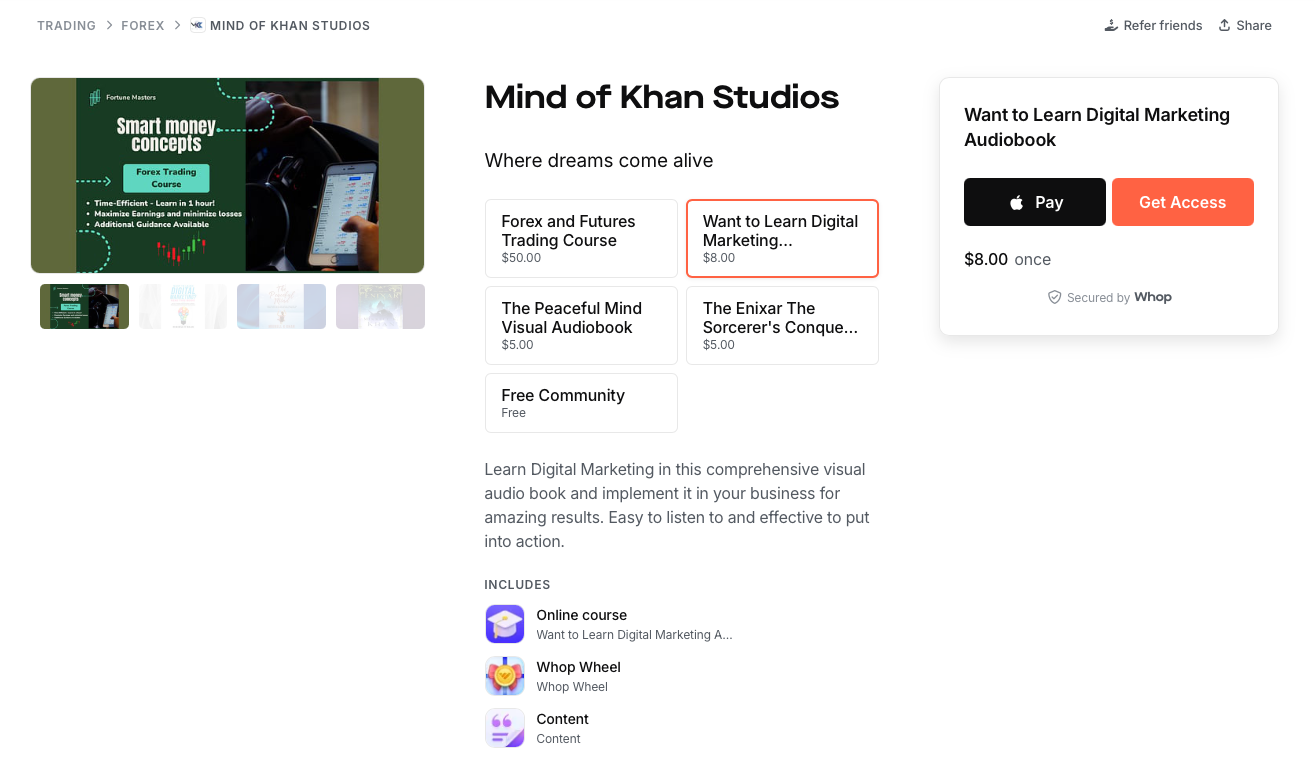
Now it's time for some exciting work—marketing your new business! Your first step should be to work on your storefront and make it look as pro as you can, with complete descriptions and a clear call to action (CTA). This helps build a good first impression and will especially help if you've chosen a platform with a marketplace, such as Whop.
When people type in keywords that match your business and scroll through the results, you want to make an instant impression on the reader. Even your business name needs to stand out and make it clear just what type of service you're offering.
Search engine optimization (SEO) is also important. By using the right keywords and other techniques, you can improve your chances of your services ranking well in Google search results. Creating a blog with links to your storefront and working with other consulting blogs to build backlinks is another useful but affordable strategy.
Getting involved with consulting communities can help you form working relationships with other businesses—they might be your competition in some ways, but everyone benefits from sharing referrals.
Marketing is key for growth, so make sure to stick to it even after it starts working. It's a never-ending story, really.
Learn more about marketing digital products
7. Digital art
Digital art is a broad sector, but if you hit a good niche and produce quality work, you could make a lot of money. You can sell infinite amounts of prints or digital assets to earn passive income, create commissioned pieces for a premium price, or both!
Some digital artists can fetch thousands of dollars for just one piece, but even if you're not aspiring to become the digital version of Picasso, you can sell smaller designs to huge groups of people and make big bucks.
What is digital art?
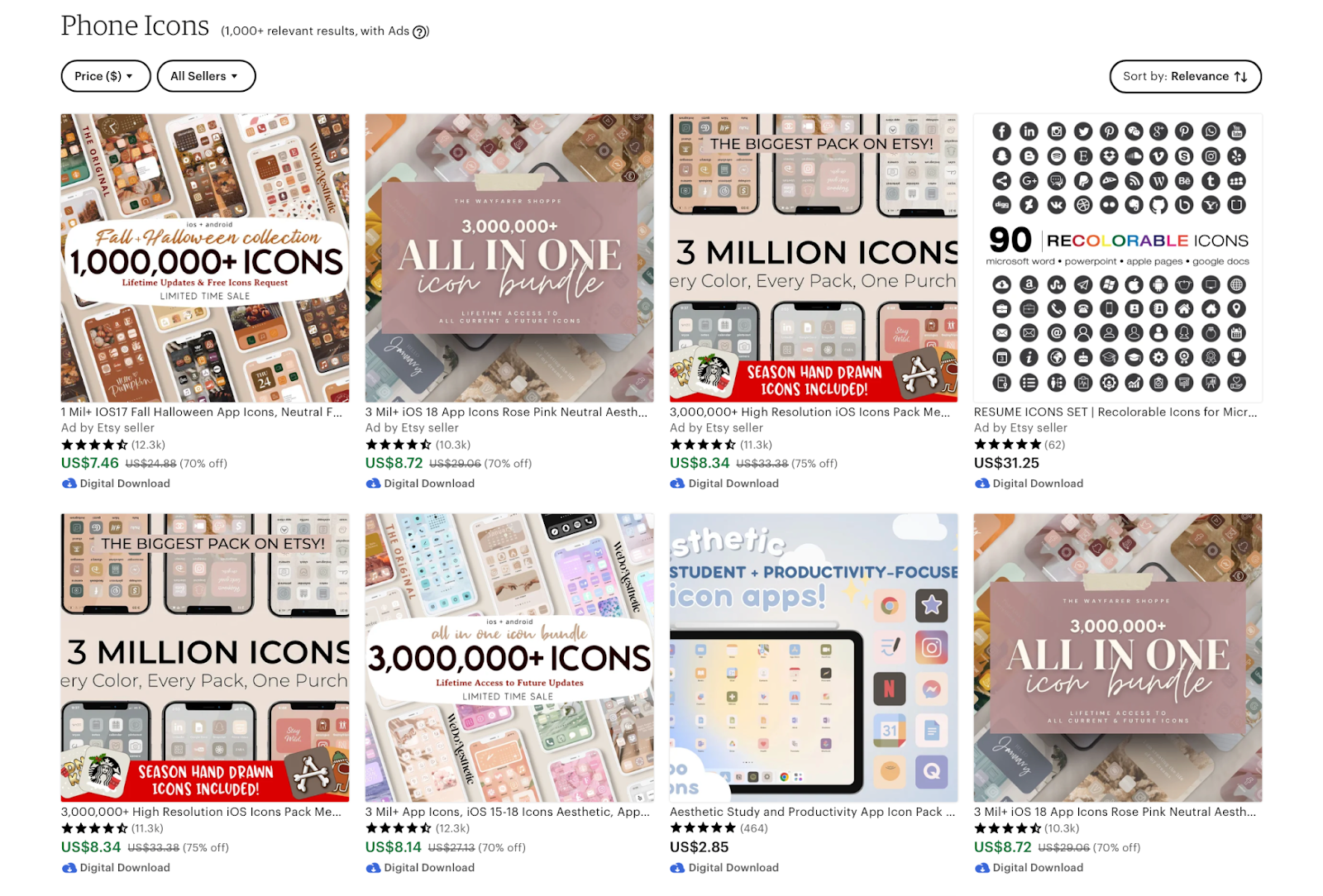
So, what qualifies as "digital art"? That question is harder to answer than you might think because digital art can come in so many different forms. As long as it's original work created by you, almost anything can be considered a form of digital art.
Here's a (non-exhaustive) list of examples:
- Digital illustrations
- Pixel art illustrations
- Game assets
- Photoshop editing services
- 3D renders and models
- 3D animation
- 2D animation
- Digital wallpapers
- Custom phone and desktop icons
- Custom digital paintbrushes
- Digital stickers and stamps
- Digital calligraphy and fonts
- NFT art
- Digital comics and webtoons
As you can see, there's a lot. And with each idea, there are multiple ways to approach it—working with companies, taking commissions from people, and selling pieces you create yourself.
How to create digital art
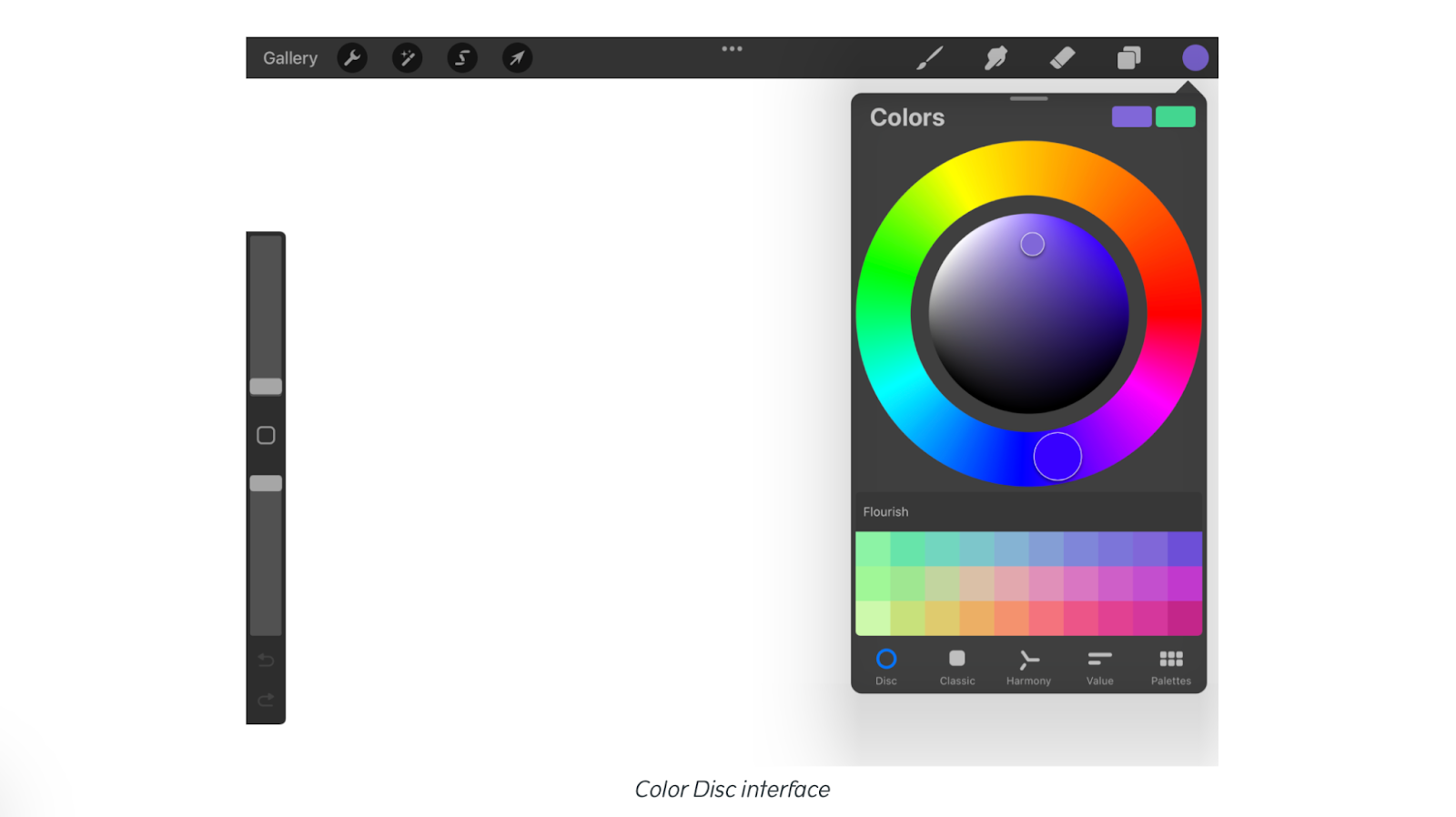
Difficulty level: Easy to intermediate
Time commitment: 1 to 500 hours
Pros:
- You can merge hobbies and passions with your side business
- Creative gigs are a lot of fun
- You can sell your work on multiple platforms to maximize profit
- You can try out lots of different types of art and ways to sell it
- Low or non-existent initial overhead
Cons:
- You might have to learn a new skill
- Some types of art can take a long time to create
- Turning a hobby into a job can affect your enjoyment
Consider your strengths and interests phase
While you can always learn to create art from scratch, it's worth thinking about your existing strengths and interests first. Knowing how to use certain software for things like digital illustration, pixel art, 3D modeling, image editing, or animation, for example, is a great start.
Your personal interests can help you pick a niche, too. Say you're an illustrator—what will you illustrate?
One popular niche for commissioned digital art is video games. In MMO games like Final Fantasy 14 or World of Warcraft, players create a unique character that they use for years and grow attached to—and lots of people like to pay for commissioned art of their character.
Specialty niches aren't the only way to go, however. If you want to create game assets, for example, you can sell asset packs of everyday objects, nature, backgrounds, animals, and people.
This also works for stickers and clipart—in Japan, for example, clipart is used everywhere and nearly all of it comes from one artist named Takashi Mifune. His database of clipart includes thousands and thousands of illustrations covering hundreds of topics, and he's known for having an illustration for any situation you can think of.
Decide on your business model phase
The three main business models for selling digital art are:
- Creating digital assets and selling them repeatedly
- Taking art commissions and creating unique pieces for clients
- Taking freelance art jobs for companies and clients
- Creating and selling private label rights (PLR) products for others to re-sell
You can do one, two, or all three of these things if you want to—though you can always start with one and grow into others in time. Creating digital products to sell is pretty snazzy because they can bring in passive income while you're working on other projects.
Create the art phase
There are still a few things to figure out at this stage but you can definitely start creating your art now. If you're a beginner, you might need to learn about file types, sizes, and compression to make sure you end up with high-quality pieces that can be shared easily and used for a variety of different things.
You can create generic files for buyers to use as they wish or you can turn your art into ready-to-buy products like desktop wallpapers, phone wallpapers, watch faces, printables, and more.
If you plan to make a lot of separate pieces for an asset pack, stickers, or clipart, make sure to organize your files from the start to make things easier later on.
Here's a list of free and low-cost art software you try if you don't already have a go-to:
Make sure you learn how to apply watermarks to your work too, so you can display lots of samples on your site without worrying about people using them without buying!
Choose a platform phase

For a digital artist, a good ecommerce platform lets you display your work, talk to potential clients, share files in high quality, and settle payment.
Etsy is a good example of this, as is Whop. You can also put your work on a PoD (print-on-demand) site like Redbubble if you want to give customers the choice to turn your designs into t-shirts, mugs, and other items.
You can also go the route of making your own website, which gives you complete creative freedom over the whole browsing and buying process, but it's a lot of work and it will take time to build visibility.
Learn how to make money with Canva
8. Mastermind groups
Mastermind groups are part of the personal development and self-help industry, which is predicted to hit a value of $14 billion by 2025. If you're interested in creating ebooks or online courses, another thing you could add to your business is a mastermind group.
What is a mastermind group?
Mastermind groups, or just masterminds, are groups of people who exchange expertise and experience in a certain field to support and boost the success of all its members.
They're often led by or founded by someone who's already made it in the field—a true expert. They also cost a hefty amount of money to join. The fee is partly about status—it's common for masterminds to aim for the very peak of success and profit—but it's also a show of commitment to the group.
A mastermind only works when all of its members are extremely motivated and committed to finding success in their field.
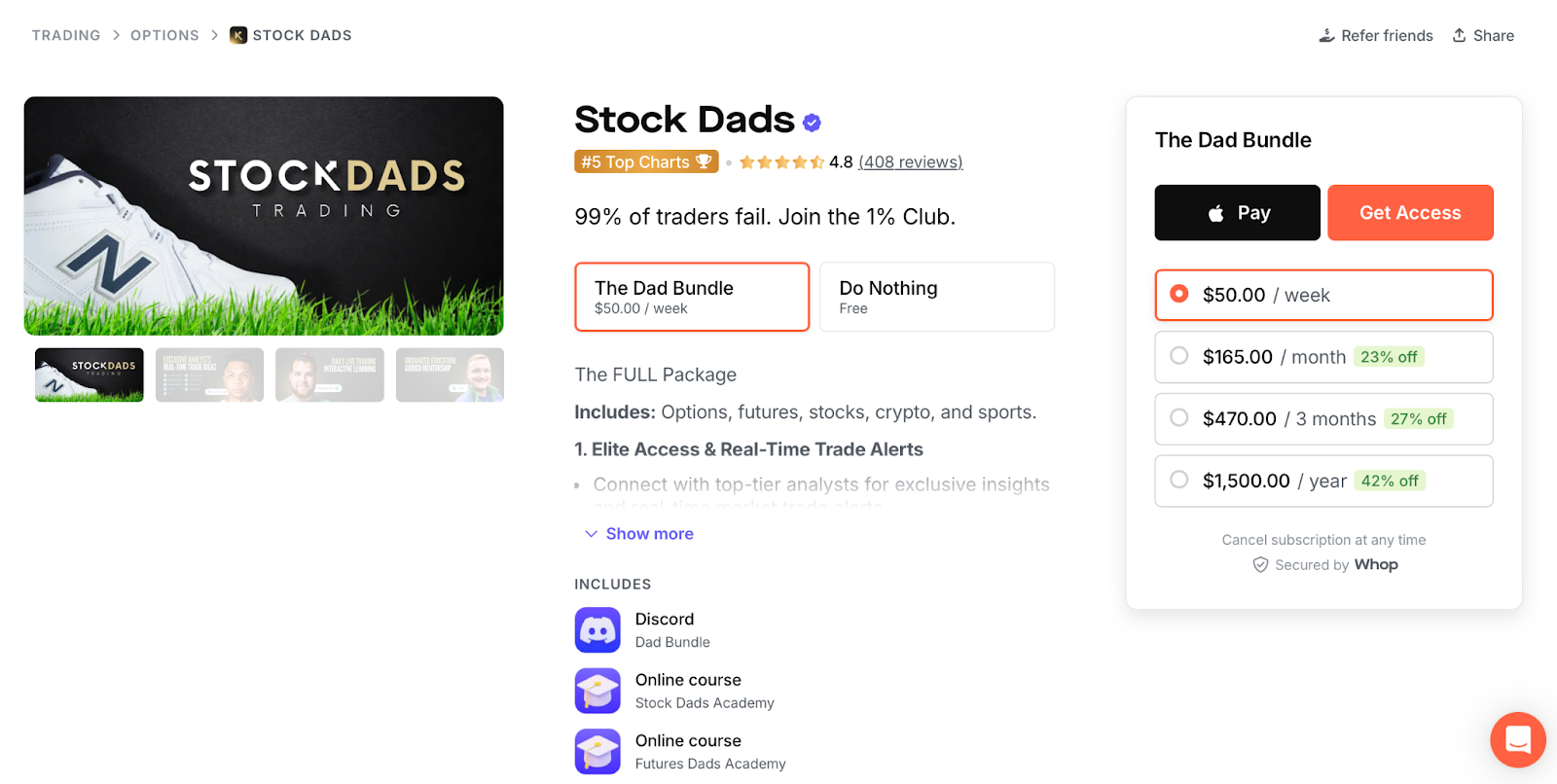
Stock Dads is an example of a successful online mastermind hosted on Whop. Its members have an exclusive Discord server where they discuss real-time trade alerts, and the leaders of the mastermind host live training sessions and mentorships.
With a $50-per-week fee or $1,500 for an entire year, this mastermind is a high-ticket product where you interact directly with the professionals and successful traders that host it, and receive a highly personalized experience.
How to create a mastermind
Difficulty level: Difficult
Time commitment: Multiple hours per week
Pros:
- Can be extremely profitable
- Usually run by multiple people so you can share the workload
- Can help you find more recognition in your field
- Upselling products is super easy
Cons:
- Need to have genuine expertise in your field
- Big commitment to your members
- Live sessions and mentoring take time each week
- Need to be confident you can help people produce results
Choose your niche and create your team phase
Choosing your mastermind topic should be fairly straightforward—it needs to be a topic you've dedicated many years to and most people don't have this level of expertise in multiple fields.
Turning your topic into a marketable niche can take a little more work, however. Shop around for competitors, assess their strategy and success, and do your best to find an angle that sells.
You can set up a mastermind by yourself, but running it with colleagues and other pros will make it easier to take on more members. But remember: Masterminds are exclusive groups. You don't need hundreds of people; it's usually more like a dozen.
Figure out your offerings phase
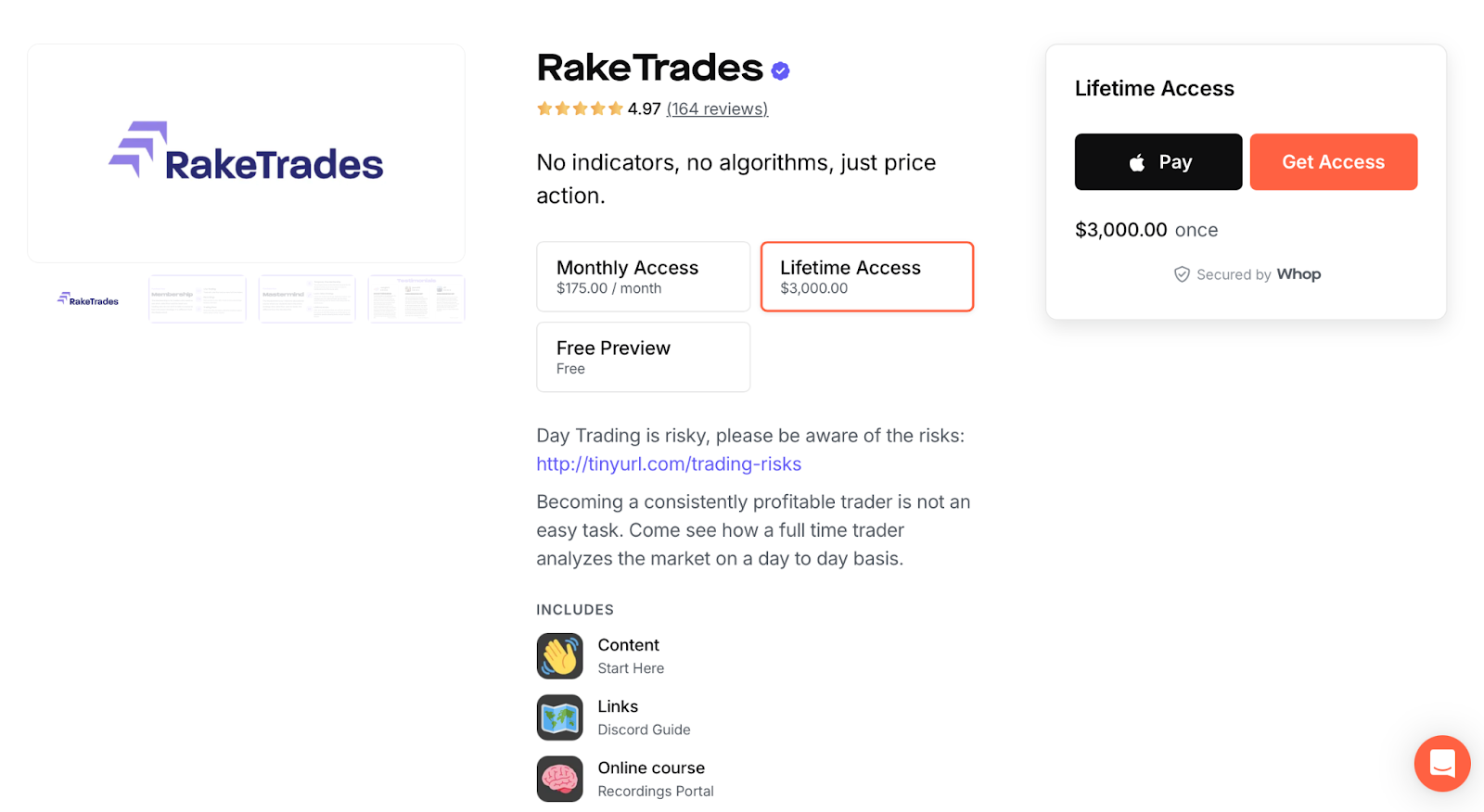
A mastermind can offer a range of products and services to its members. The main reason your members will join will be the mastermind session events, so make sure you host these regularly.
Other than that, you can create an online community with a range of different resources. A Discord server, online courses, one-on-one mentoring, special events, giveaways, a suggestion box—there's a lot to choose from. You can also pair your mastermind with a podcast and other types of social media presence.
The key is to create a thriving community where members can achieve a highly interactive and personal experience because this is what will make the price worth it. If all they needed was general advice from industry experts, there are hundreds of books they can buy for a fraction of the price.
Your job is to go above and beyond in every way possible, but in return, you're getting some serious money. Many masterminds cost anywhere from $1,000 to $15,000 per person.
When you've figured it all out, draft a Big Purpose statement that describes why your group exists and what it offers to its members.
Set up your community phase
Now you need to choose a platform to host your mastermind group. The best option for this is Whop because you can offer a range of different services for a range of different price points all in one place. The best masterminds are highly comprehensive. You'll have a community, live sessions, ebooks, course materials, and all of that can be easily sold through Whop.
Remember to come up with a snappy name for your mastermind—something that grabs a reader's attention and communicates your expertise is perfect.
Learn how to run a mastermind with a whop
Set a price and get ready to launch phase
Picking the right price for a product is always important, but it's even more crucial for a high-ticket product like this. Mastermind groups simply aren't meant to be cheap, and if you go too low, it will affect viewers' first impressions of you and your level of expertise. Don't sell yourself short!
Having said that, you can't just squeeze as much money out of your members as possible for no good reason. Think about the time you'll dedicate to the group, the value you think you can bring to members, and the results you think you can help members produce.
This should help you pinpoint an appropriate price range. Remember you can also introduce different membership tiers to accommodate people who are willing to pay more or less than the default.
9. Freelance services
There are all sorts of freelance services you can offer completely online and digitally, and it can be quite profitable. According to CNBC, over 64 million people were freelancing in the United States in 2023, and high-demand skills like programming can bring in as much as $250 an hour. Sounds pretty sweet, right?
What is freelancing?
Freelancing is a type of project work where you provide services to multiple different companies, organizations, and people at the same time. Some projects are one-off and could last as little as a day, while other contracts include steady work over a long period of time.
Though there are freelancers who temporarily visit offices and work in person with different clients, this isn't a requirement at all. Being a remote freelancer is extremely popular, and with the help of worldwide payment tools, clients are happy to hire people in all sorts of locations. In this sense, selling a custom article, app, or SEO service online is just the same as selling any other kind of digital product.
You can offer various skills and services as a freelancer, but here are some of the most common:
- Graphic design
- Photography
- Web development
- Software engineering
- Content writing
- Technical writing
- Data entry
- Editing
- Video editing
- Translation
- Marketing
- SEO
How to start a freelancing business
Difficulty level: Easy
Time commitment: Flexible
Pros:
- Freedom to work when you want
- You get to choose your projects and clients
- The more experienced you get the more you can charge
Cons:
- Takes time to build a client base
- Admin and schedule management can be hectic
Choose the services you want to offer phase
The first thing to figure out is what kind of freelancing work you want to do. It's quicker to choose something you already have skills and experience in, but there are also quick-to-learn skills you can pick up and start selling.
Content writing, transcription, data entry, and virtual assistant work, for example, are all good choices for beginners. Programming, on the other hand, will require a lot of studying before you're able to work as a freelancer.
Freelancers tend to focus on one area, but this can still result in multiple different services. For instance, copywriters also often offer SEO, content strategy, or marketing services.
Create a portfolio phase
You don't need professional experience or qualifications to become a freelancer but you do need to showcase your skills to win jobs. The best way to do this is with a portfolio.
If you have experience, you can add previous projects and jobs to your portfolio and if you're just starting out, you can make samples and complete personal projects. If you need to create portfolio content from scratch, this can take quite a lot of time since you need everything on your portfolio to be examples of your best work.
There are special sites where you can host your portfolio, or you can make your own portfolio website. For instance, freelance writers can use Journo Portfolio; creatives can turn to Behance; programmers usually just share their GitHub repository.
Set your services and prices phase
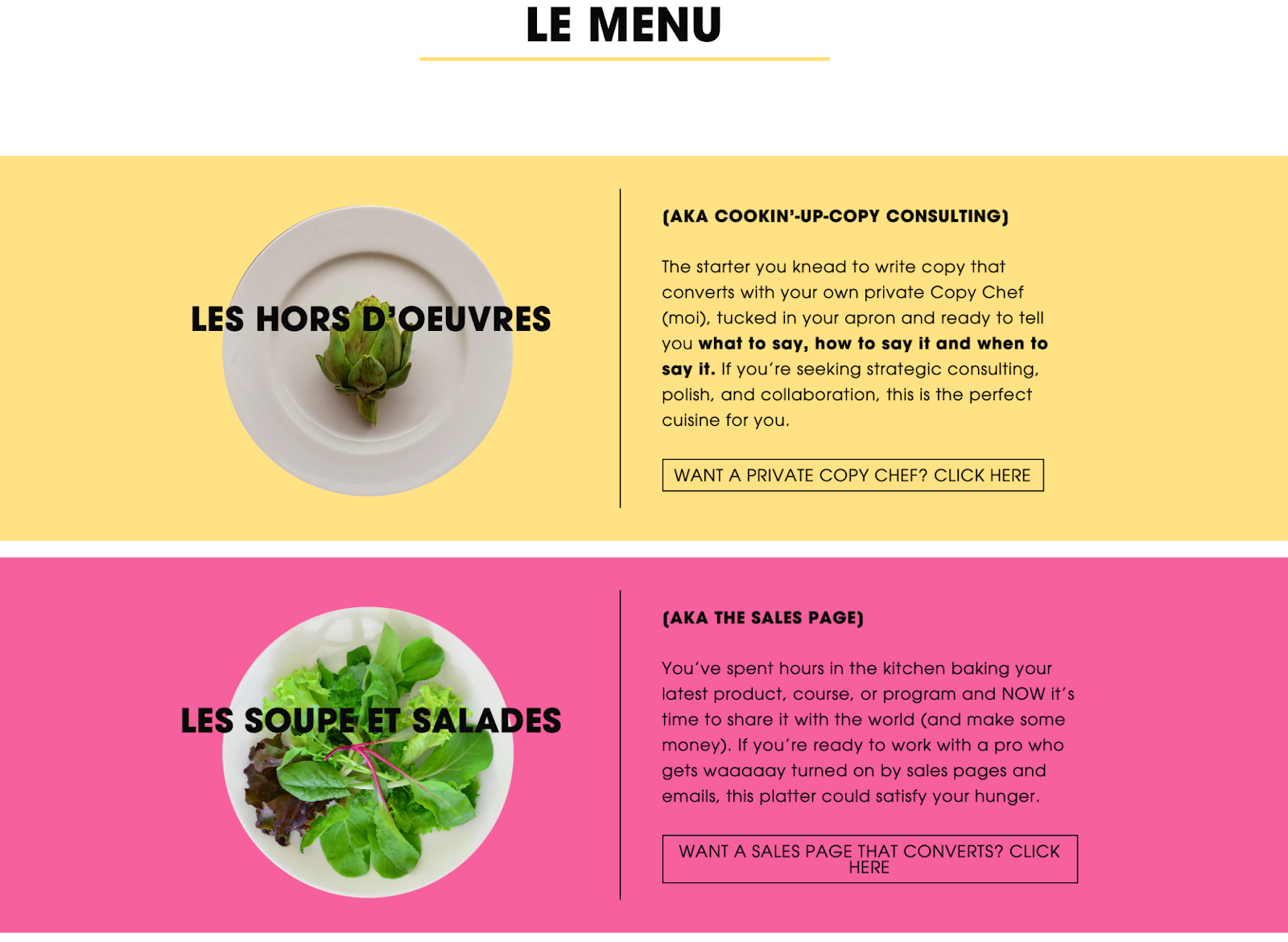
While you can come to custom agreements with clients, it's also good to outline your services and how much they cost.
A harsh truth about freelancing is that unless you've done related professional work before, you probably need to start with fairly low prices. As you get more experience, you can charge more. If you hit it big you can even stop listing prices and just charge each client based on how much they're willing to pay, like copywriter Kira Hug.
At the start, low prices will attract smaller clients who don't have a big budget. You can use those projects to fill your portfolio with things you've done before—it's a win-win.
Find clients phase
To find your first clients, you can use your existing professional network, sites like LinkedIn, and also join platforms and communities where people post jobs. Reddit is often a good resource for freelancers, as are various Discord servers.
As a freelancer, it's important to be flexible. Many clients will have their own way of doing things and you may find yourself signing up for new payment services and learning new software a lot.
10. Digital planners

Planners and plans are a great way to make the most of your time, stay organized, save money, and get motivated. Creating plans isn't a talent everyone has, however—fitting all of the requirements in the right amounts into the right order is like completing a puzzle.
If you're good at that kind of thing, creating custom digital planners or journals for people could be a good side business. By mixing appealing designs with practical planning, you can create a product perfect for earning passive income.
You can also offer custom planning services to help customers create a plan that suits them.
What is a digital planner?
Digital planners fall into two categories: planner templates that buyers can fill in themselves, and pre-made plans that are ready for customers to follow.
You can offer plans on a range of subjects, such as exercise plans, meal plans, study plans, diet plans, and more. Pre-made meal plans are especially popular as many people find it difficult to figure out a selection of meals that effectively use up all the ingredients within the week.
How to create a meal plan
Difficulty level: Easy/Intermediate
Time commitment: 2-3 hours per plan
Pros:
- Easy to make
- Good source of passive income
- Pre-made plans attract repeat-customers
- Lots of variety—you can make plans to meet all kinds of requirements
Cons:
- Repetitive work
Designing templates phase

Before you start creating pre-made plans, you need templates to work with. Making your template stand out is a big part of drawing in customers, so put some thought into what the most effective structure would be and how you can make it look good.
If you have an artistic side, it's also a good idea to create multiple designs and colors to suit different tastes. Meal plan templates will look different from exercise plan templates, so make a template for each type of plan you intend to offer.
When designing your templates, think about how buyers will use them. Some will print them onto A4 paper, and others will fill them in on a tablet. A PDF version with text boxes will allow people to fill the template out on a computer, too.
Start creating planners phase
Once your templates are ready, you both have something to sell and something to start making pre-made plans with. When you start making plans, variety is key but you might want to think about which order to make them in.
For instance, creating a few of each type (meal, diet, study, etc.) first might be better than starting with 20 niche exercise plans. For meal plans, it could also be a good idea to make new ones each week so repeat customers have new things to try.
Make sure to set specific themes for each plan, for example:
- Meal plans: vegetarian meals, meals under 500 calories, vegan meals, pescetarian meals, allergy-friendly meals, high-protein meals
- Exercise plans: exercise plans for certain ages, exercise plans for men, exercise plans for pregnant women, exercise plans for beginners
- Study plans: plans for high school students, plans for university students, plans for self-learners, plans for medical students
Choose a platform phase
If you're only offering templates and pre-made plans, you can put your products on a site like Whop, Gumroad, Sellfy, Etsy, or Shopify. If you want to offer custom planning services, a platform with a bit more flexibility would be better.
With Whop, for example, you can add Chat apps and Video Call apps so you can schedule consultations with customers to discuss their needs. The Files app can help you share your work easily, and the payments will be taken care of too. You could also set up a subscription so people can receive a weekly or monthly plan.
Once you've chosen a platform, you need to write product descriptions and make images for your templates. Make sure they're cropped or watermarked so people can't use them without buying them—there are a lot of pesky thieves all over the internet.
Learn more about selling meal plans online here.
11. Online Coaching
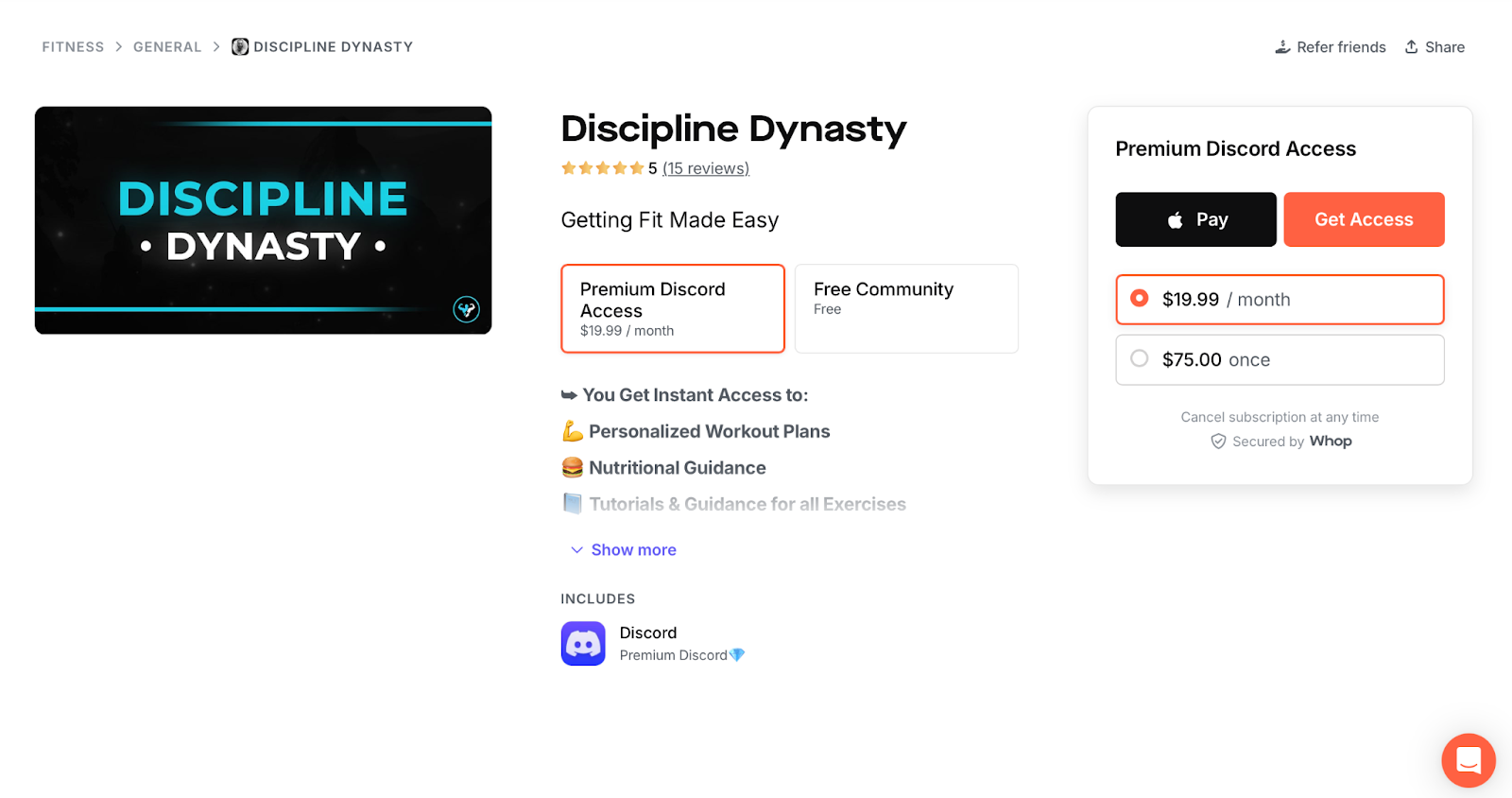
Online coaching is another profitable digital service because it's so personalized. You need to video call and talk with your clients directly to really help them, and this kind of thing doesn't come cheap.
There are lots of different kinds of coaching, with individual sessions costing anything from $40 to $100 and monthly subscriptions with multiple sessions costing between $100 and $300. With a session usually lasting an hour, this means you could earn as much as $100 per hour.
What is online coaching?
Online coaching is exactly what it sounds like—the same as in-person coaching but done through video calls. An online fitness coach might not be able to correct your posture directly, but the convenience of being able to jump into a session from home or wherever you are makes it worth it.
As for other topics like nutrition, weight loss, mental health, and career progression, making the move to online sessions barely makes a difference at all. The value comes from your knowledge, teaching, and support instead of your physical proximity.
Your goal as an online coach is to help people reach their goals. Whether they want to lose weight, prepare for parenthood, make a career change, or improve their financial standing, an experienced coach can provide the practical advice and emotional support they need to succeed.
How to start an online coaching business?
Difficulty level: Easy
Time commitment: Multiple hours a week for coaching sessions
Pros:
- You can help people find success
- You can start quickly
- Knowledge and a good internet connection is really all you need
- You can take on as many or as few clients as you want
Cons:
- It can be an emotionally draining job
- Not every client will be successful
- Finding clients can take time
Choose your coaching niche phase
People want to be coached by someone with a lot of expertise and experience in a specific area, so it's best to offer your services in just one area. An online coach who offers fitness, finance, and career coaching all at once is a little suspicious.
If you have experience in a particular area, it's probably best to make that your coaching niche. If you have multiple options open to you, one of the best ways to choose is to do a little market research and see which topic seems more popular or profitable.
Find a platform phase
Joining an online coaching platform can be one of the best ways to get noticed and bring in clients when you're just starting out. You need a platform that helps you streamline the coaching experience, letting you sell sessions and memberships, schedule calls, take calls, and get paid all in the same place.
Specific coaching niches often have their own platforms, like Everfit or Movement for fitness coaching. One of the best platforms for online coaches, however, is Whop. That's because it's entirely flexible and can help you mold your coaching business into whatever you want.
For instance, as well as scheduling sessions with your clients, you can also set up an optional chat for them to help support each other, or sell additional digital resources like meal or study plans.
Decide your offerings and build your brand phase
Your coaching business is all about you, so you need to learn how to sell yourself and your experiences to make people want to work with you. As well as outlining the kinds and lengths of sessions you want to offer and any add-on options, you need to write up some copy introducing yourself and your style of coaching.
For a weight loss coach, for example, a story about your own weight loss transformation and how you developed a passion for nutrition and fitness would work well. People need to trust and connect with you, so it's important to be personable and honest.
Market your business phase
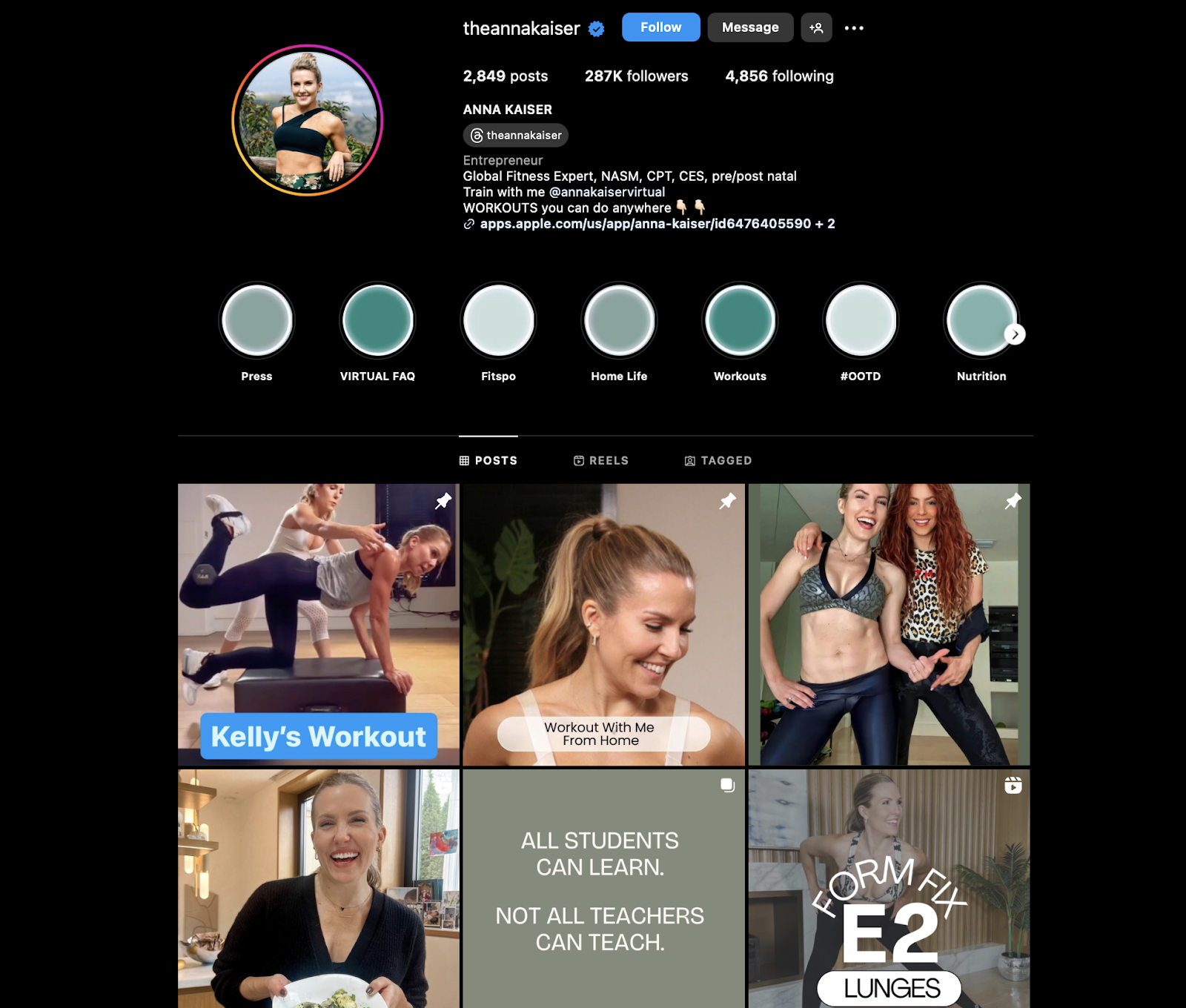
It shouldn't take too long before you're ready to launch your coaching business, but it's not like clients will start flooding in from day one (though it would be great if they did!) Instead, you'll have to start marketing your business.
There are all sorts of ways you can do this, from paid advertisements to blog posts. You can also give some free coaching sessions to people in your social or professional circle and then ask them to write a short review you can post on your storefront.
Setting up social media accounts for your business is also a good idea because so many people use social media to find products and services. You can post motivational messages, show off your own wellness routines, and share examples of your own successes as a way to show clients what kind of results they could achieve.
Learn more about marketing strategies
Other Top Sellers
If you can't find a digital product on this list you fancy, here are some more profitable products to look into creating and selling.
Templates
Templates are pre-made designs or layouts that creators can develop to help others jumpstart their projects. They serve as a helpful starting point for social media posts, blog articles, or website designs. For example, creators can use a Notion Business Shift Planner template to be more organized.

Printable Worksheets and Guides
Instead of creating a 30-page eBook or creating multiple planners, videos, or expert training for a membership, why not create a bundle of printable worksheets or a guide? Certified Notion Creator Dave has the Habit Box Tracker filled with various worksheets such as a journal, progress chart, and health routines guide.
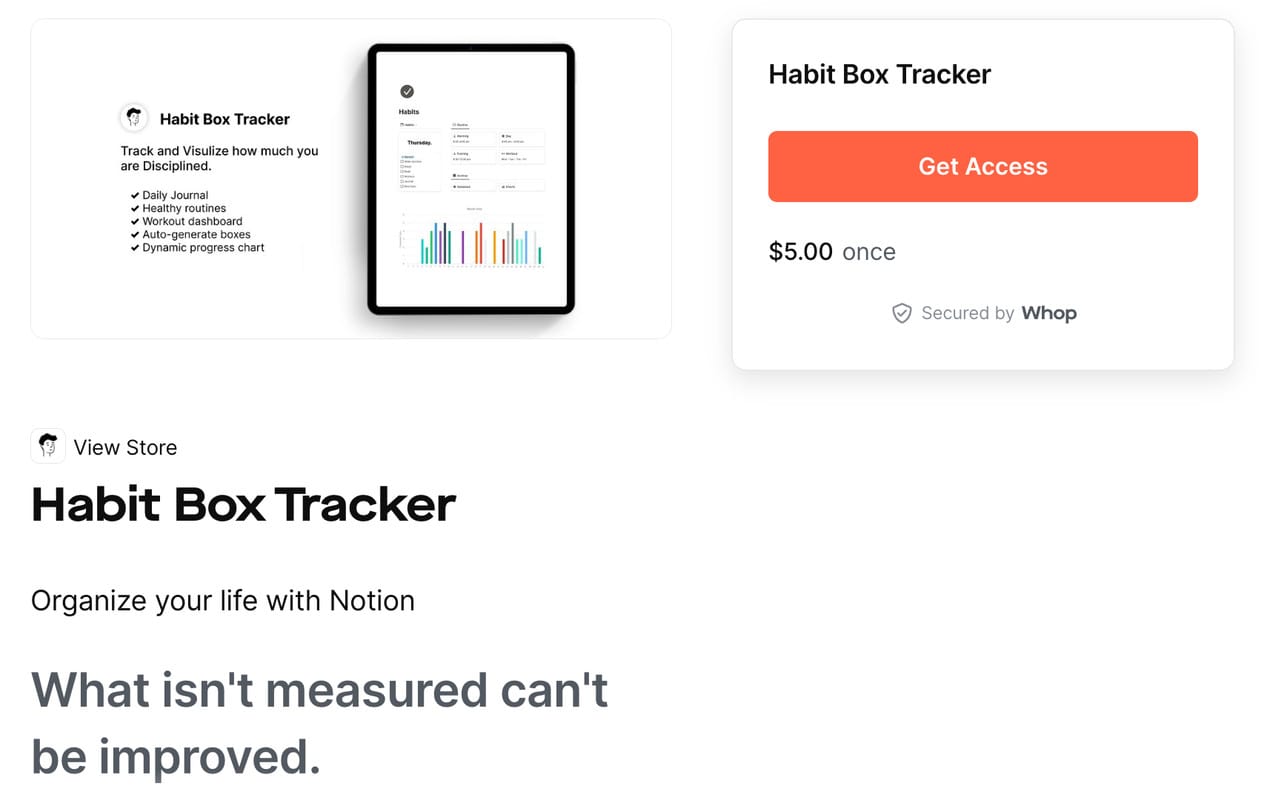
How to Sell Digital Products
When it's time to sell your product, you have the choice of different business models. You can choose a one-off pricing option or a subscription option.
One-Off
For this pricing option, a person only needs to pay once to receive the digital product. Many creators often use a Goldilocks approach, or anchored pricing, where they use two or three pricing tiers, making the middle offer the best. This gives a customer perceived control over which price to choose, often resulting in increased revenue for the creator over time.
Best for:
- Online courses
- eBooks
- Templates
- Workbooks
- Planners
- Worksheets
- Guides
Subscription model
For the subscription model, a customer pays a monthly, quarterly, or yearly subscription to receive access to exclusive content. This makes for a great recurring revenue option for creators.
Best for:
- Online communities
- Newsletters
- Memberships
Once you've figured out which pricing option is best for selling your digital products, the next step is to find the right platform to sell and market them.
Where to Sell Digital Products
Depending on your budget, needs, and the product you create, there are many online platforms where you can sell your digital products.
Amazon: Amazon is a popular platform for selling digital products like eBooks and software since it has access to a large audience of potential buyers.
Etsy: Known for handmade crafts and supports digital downloads, including printables, templates, and digital art, Etsy is great for creative digital products.
Gumroad: Gumroad is a creator-friendly platform, perfect for selling eBooks, music and software. Fees are high, though, so make sure you have a strong marketing plan to sell your digital product.
Podia: Podia is all about making it easy for creators to sell online courses, membership subscriptions, and digital downloads.
Teachable/Kajabi/Thinkific: These platforms focus on selling online courses and other digital products.
But Whop is the best online platform that's perfect for creators – and helps make your product the most profitable.
Creating a digital product with Whop is super easy. Go to the Whop website, click "start selling" — or watch a detailed video.
When you first create your whop it is a blank canvas. All you have to do is add the apps (aka features) that you want to your whop to build your perfect online hub. Want to sell community access? Add the chat app. What about ebooks or software? Add the files app. Have a course in mind? Just add the courses app!
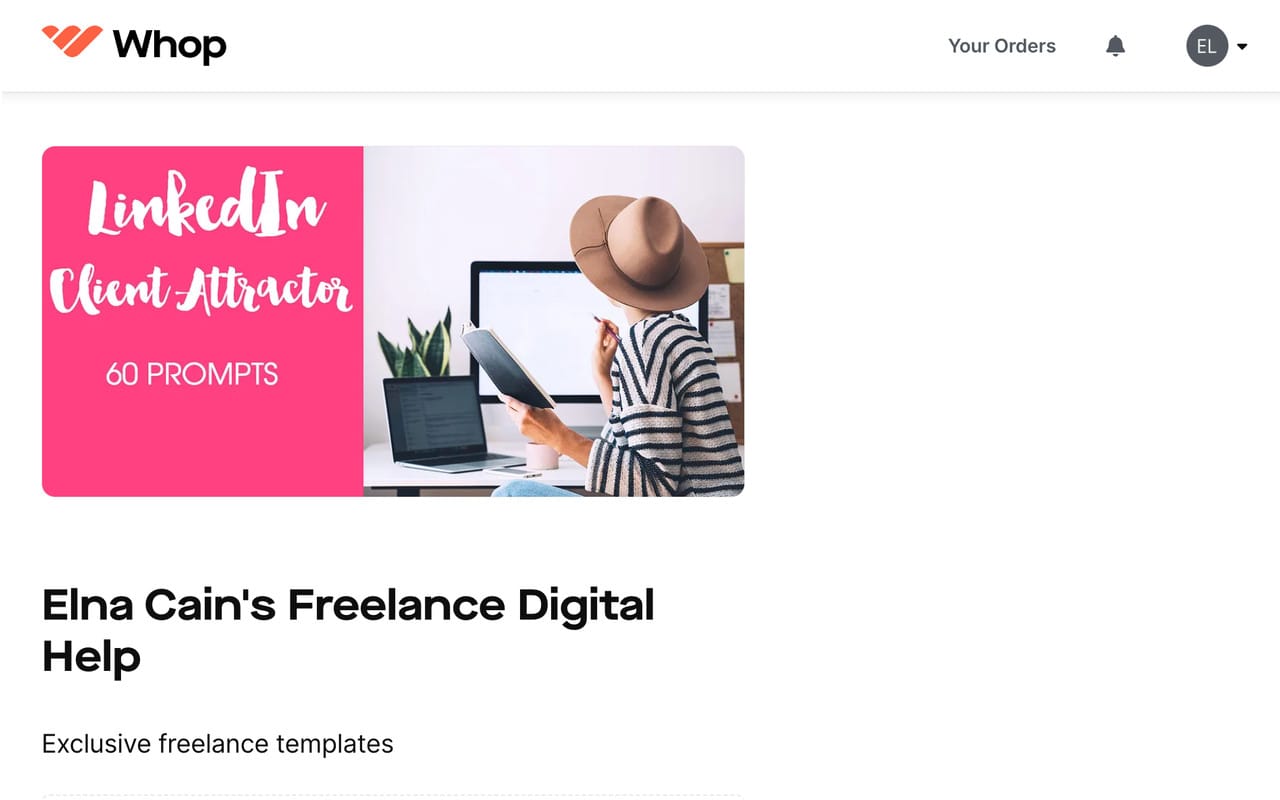
Follow the prompts to set up your whop. And don't forget to configure your payment options under Billing.
Sell Profitable Digital Products with Whop
There you have it - the most profitable digital products to sell. If after reading this you're still asking 'is selling digital products really profitable?', then the answer is a big, loud YES! Whether you decide to write an eBook or sell a comprehensive how-to course, digital products are IT right now, so take advantage and start your side hustle with Whop today.
It takes less than ten minutes to sign up as a seller on Whop - what are you waiting for? Start selling digital products today!
